Resources
Style
Planning
View All
THE blog
The Science Between Antioxidants and Reproductive Health
Antioxidants are molecules that neutralize harmful free radicals in your body. Free radicals are unstable atoms that can damage cells, leading to oxidative stress. This oxidative stress is believed to impact health negatively, including your reproductive health. Scientific studies have increasingly explored the role of antioxidants in fertility, with many findings suggesting a positive impact.
Antioxidants are known to combat oxidative stress, which can damage cells, including sperm and egg cells. By neutralizing free radicals, antioxidants help maintain cellular integrity and function, which is crucial for reproductive health. One notable study published in the journal ‘Fertility and Sterility’ found that men who took antioxidant supplements experienced improvements in sperm quality, including increased motility and reduced DNA fragmentation. This suggests that antioxidants can enhance male fertility by protecting sperm from oxidative damage.
The relationship between antioxidants and reproductive health is rooted in the protective role antioxidants play. By neutralizing free radicals, antioxidants help maintain the integrity of your cells, including sperm and egg cells. Reducing oxidative stress can result in better quality eggs, enhanced sperm function, and an overall improved environment for conception.
Consider antioxidants as a form of cellular defense. When your body has an adequate supply, it can combat oxidative damage more effectively. This is particularly beneficial for your reproductive system, where cell quality is crucial for successful fertilization and a healthy pregnancy.
Research supports this connection. Studies have shown that higher serum concentrations of antioxidants correlate with better reproductive outcomes. In women, antioxidants support healthy steroidogenesis, the process by which sex steroids are produced, essential for ovulation and menstrual cycle regulation. In men, antioxidants improve sperm quality, motility, and overall fertility.
Moreover, specific antioxidants have been identified as instrumental in fertility. Vitamins C and E, beta-carotene, and selenium are just a few that have been extensively studied. They help in reducing oxidative stress and improving the health of reproductive cells. Knowing this, incorporating antioxidant-rich foods into your daily diet can be a strategic move for enhancing your reproductive health.
How Do Antioxidants Improve Fertility?
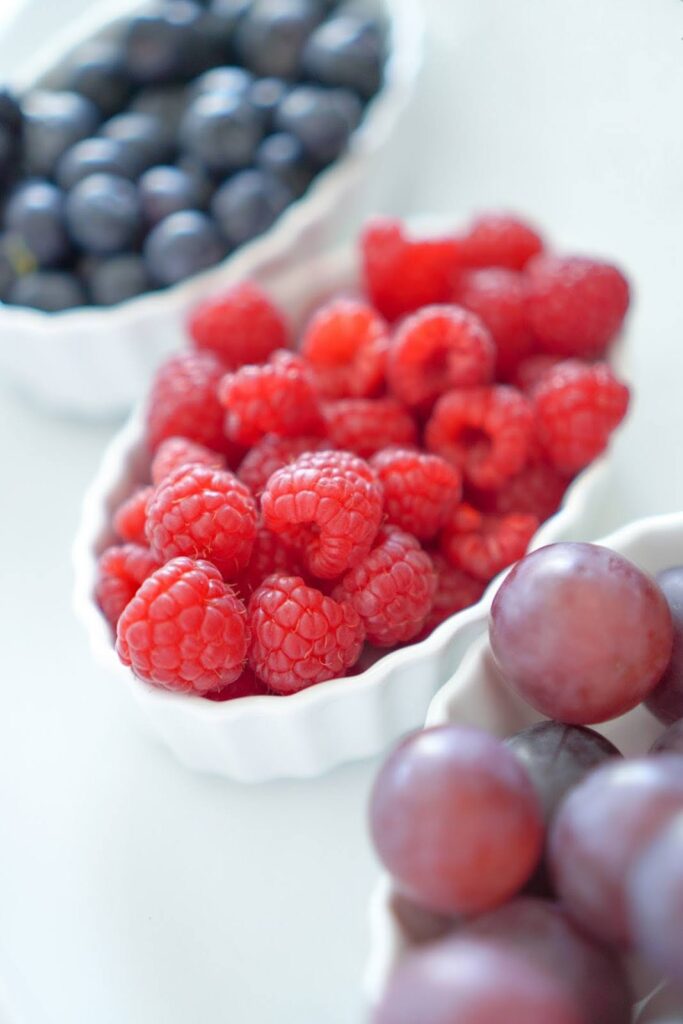
Antioxidants work their magic by directly combating oxidative stress (OS), a condition characterized by an imbalance between free radicals and antioxidants in your body. Free radicals are unstable molecules that can damage cells, including the delicate cells involved in reproduction. By neutralizing these free radicals, antioxidants protect your eggs and sperm from oxidative damage.
When oxidative stress is reduced, the quality of both eggs and sperm can improve significantly. For women, this means healthier eggs that are more likely to result in successful fertilization, embryo quality, and ultimately, a viable pregnancy. Improved egg quality is especially critical for those dealing with age-related fertility challenges or conditions like polycystic ovary syndrome (PCOS).
On the male side, antioxidants play an equally crucial role. They help enhance sperm quality by improving motility, morphology, and overall DNA integrity. Healthier sperm increases the chances of successful fertilization and reduces the risk of miscarriage and genetic abnormalities.
Additionally, antioxidants can support the overall environment of your reproductive system, contributing to better ovarian function and uterine health. This balanced environment is crucial for conception and maintaining a healthy pregnancy. Thus, whether you’re trying to conceive naturally or with the assistance of IVF or ICSI, incorporating antioxidants into your routine can be a powerful ally in your fertility journey.
What Causes Oxidative Stress?
Oxidative stress is a condition that arises when there’s an imbalance between free radicals, specifically reactive oxygen species (ROS), and the body’s ability to neutralize them with antioxidants. It’s like a tug-of-war happening in your cells, and when the scales tip in favor of ROS, the result is oxidative damage.
This oxidative damage can affect various parts of your body, but when it comes to fertility, both male and female reproductive health can take a hit. Let’s dive into some common causes. First off, poor lifestyle choices such as a lack of regular exercise, overeating, or a diet rich in sugars and unhealthy fats are significant contributors. These habits increase ROS levels while depleting your antioxidant reserves, creating a fertile ground for oxidative stress.
Environmental factors also play a crucial role. Exposure to pollutants, toxins, and radiation can ramp up ROS production. Then there’s the unavoidable factor of aging. As we age, our body’s cellular energy production decreases, and we’re naturally more prone to oxidative stress.
Not to be overlooked, physical and emotional stress can trigger oxidative stress as well. Chronic stress encourages the production of ROS, leading to cellular damage and decreasing your body’s capacity to fend off these unwelcome molecules.
Understanding these causes helps you take proactive steps to mitigate oxidative stress, ultimately creating a better environment for reproductive health. Now, let’s explore how antioxidants step in to level the playing field.
Key Antioxidants That Boost Fertility

Okay, now that we know that we want LESS oxidative stress and MORE antioxidants – how do we actually do that?
First, focus on incorporating antioxidant-rich foods into your daily diet. These foods are not only delicious but can also help boost your fertility. Think colorful fruits and vegetables, nuts, seeds, and whole grains. Berries, spinach, and dark chocolate are all excellent choices packed with antioxidants to help fight oxidative stress.
In addition to a diverse diet, consider omega-3 fatty acids, which have been shown to reduce prostanoids and increase antioxidant effects. You can find these in fatty fish like salmon, as well as in flaxseeds and walnuts. Not only do these foods help balance your antioxidant levels, but they also add variety and flavor to your meals.
Don’t forget about lifestyle factors! Regular physical activity can enhance your body’s ability to manage oxidative stress. Likewise, stress-reduction techniques such as meditation, yoga, or even simple daily walks can have a positive impact on your oxidative balance.
Finally, avoid exposure to toxins as much as possible. This includes reducing your intake of processed foods, quitting smoking, limiting alcohol consumption, and avoiding areas with high pollution. These changes might seem challenging, but they’re essential steps toward decreasing oxidative stress and creating a fertile environment. Antioxidants help combat oxidative stress, which can damage reproductive cells.
By taking these steps, you’ll be on your way to a healthier, more balanced body, primed for fertility. Remember, while it might take some time to see the effects, every small change counts.
Top Antioxidant-Rich Foods for Fertility
When it comes to enhancing your fertility through diet, loading up on antioxidant-rich foods is crucial. These foods combat oxidative stress, protect your eggs and sperm, and provide a fertile foundation for conception. Eating a diverse range of fruits and vegetables is an excellent way to ensure you’re getting the antioxidants you need.
Here are some top choices to consider:
- Berries: Blueberries, strawberries, raspberries, and blackberries are bursting with antioxidants and vitamins that support reproductive health.
- Leafy green vegetables: Spinach, kale, and Swiss chard are not only packed with antioxidants but also loaded with folate, which is essential for healthy fetal development.
- Citrus fruits: Oranges, grapefruits, lemons, and limes are excellent sources of vitamin C, a powerful antioxidant that can enhance the quality of both eggs and sperm.
- Nuts and seeds: Almonds, walnuts, and sunflower seeds are high in vitamin E, which helps protect sperm and egg DNA from damage.
- Colorful vegetables: Vegetables like carrots, sweet potatoes, and bell peppers contain beta-carotene, an antioxidant that converts to vitamin A in the body, supporting hormonal health.
- Tomatoes: Rich in lycopene, tomatoes can improve sperm quality and reduce the risk of oxidative stress.
Incorporating these foods into your daily diet can create a positive impact on your fertility. Remember, balance and variety are key. Aim to fill your plate with a rainbow of colors to maximize the benefits of different antioxidants.
| Antioxidant | Natural Sources | Impact on Fertility |
| Vitamin C | Citrus fruits, strawberries, bell peppers | Improves sperm quality, reduces oxidative DNA damage |
| Vitamin E | Nuts, seeds, leafy greens | Enhances endometrial lining, crucial for implantation |
| Coenzyme Q10 | Meat, fish, whole grains | Improves ovarian response, boosts egg quality |
| Selenium | Brazil nuts, seafood, eggs | Protects sperm from oxidative damage, supports reproductive health |
| Zinc | Oysters, beef, spinach | Essential for hormone regulation, improves sperm formation |
Incorporating antioxidant-rich foods into your diet can significantly enhance both male and female fertility by reducing oxidative stress and improving reproductive health. These vital nutrients work to protect and improve egg and sperm quality, support hormone regulation, and create a more favorable environment for conception. By understanding and utilizing the power of antioxidants, you’re taking a proactive step towards boosting your fertility and optimizing your chances of a successful pregnancy.
Looking for More Support on Your Fertility Journey?
You can apply for a free strategy call to see which program would be the best for you. Our team of dedicated fertility practitioners will help you gain answers, clarity, and a roadmap to naturally enhance your fertility using science-backed methods and a food as medicine approach.
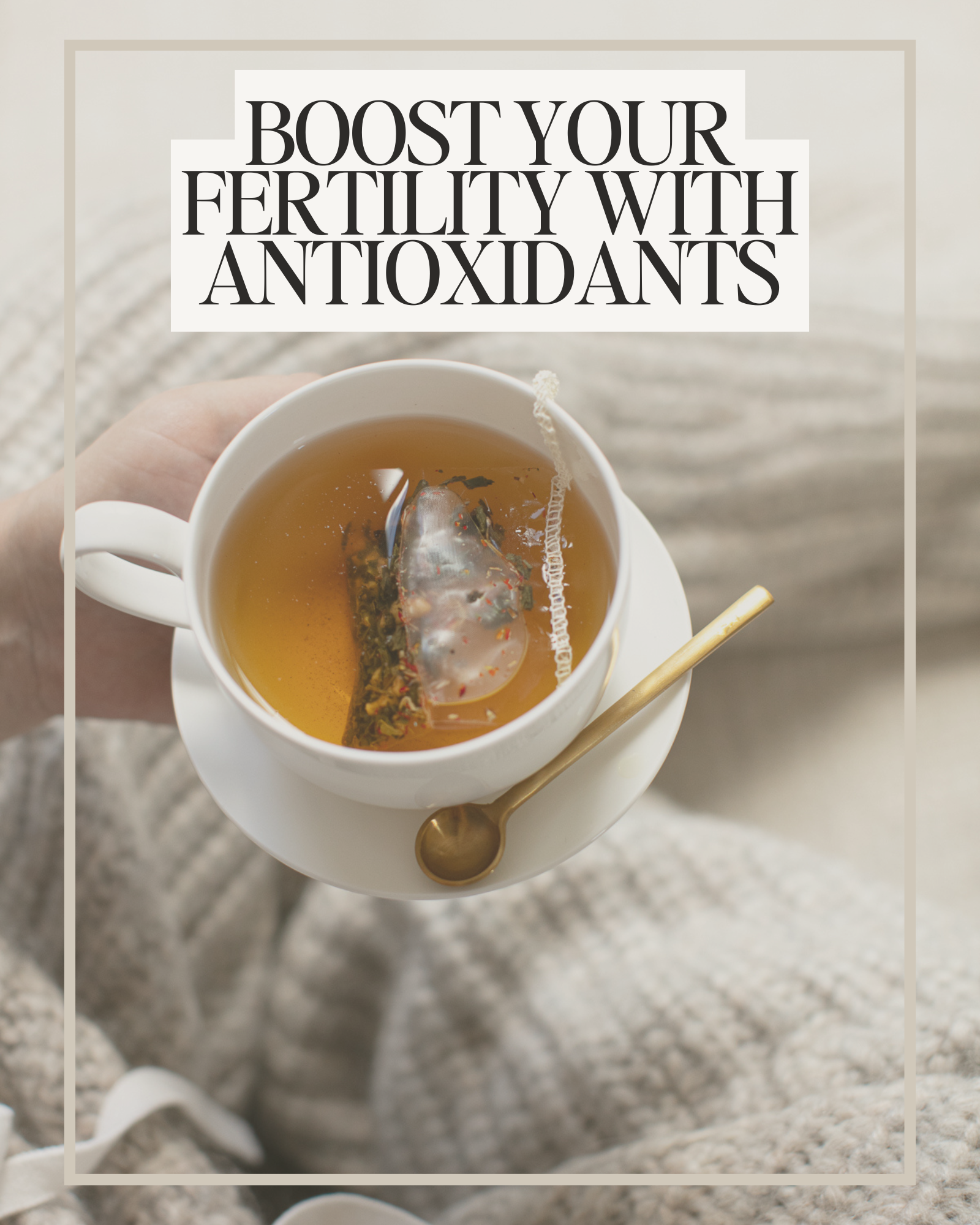
Understanding the Link Between Blood Sugar and Fertility
It might surprise you to learn that blood sugar levels play a significant role in your fertility. When your blood sugar is out of balance, it can disrupt several body processes, including those critical for reproduction. But what exactly does this mean?
When you consume food, your body converts carbohydrates into glucose, which provides energy to your cells. Insulin, a hormone produced by your pancreas, helps regulate this blood sugar level. If your blood sugar levels are constantly high, a condition known as hyperglycemia, it can lead to insulin resistance. This means your body’s cells no longer respond effectively to insulin, causing your pancreas to produce even more insulin.
Over time, elevated insulin levels can influence your reproductive hormones. In fact, High blood sugar levels can increase the risk of miscarriage by 30% and Women with diabetes are 2-4 times more likely to have fertility problems.
For women, this may mean disrupted ovulation cycles, while men might experience reduced sperm quality. Multiple studies have shown that maintaining balanced blood sugar levels can significantly enhance fertility outcomes for both genders. Therefore, having a healthy balance of blood sugar is not only essential for overall health but also for achieving and sustaining optimal fertility.
Why Balanced Blood Sugar Matters for Conception
Your body’s ability to regulate blood sugar levels directly ties into your reproductive health. Lowering blood sugar levels can actually improve pregnancy rates by 20-30%. When blood sugar spikes or crashes, it can disrupt the delicate balance of hormones needed for conception. Insulin, a hormone that helps manage glucose, plays a crucial role here. High levels of insulin can lead to a condition called insulin resistance, which is often linked to polycystic ovary syndrome (PCOS) – a significant cause of infertility in women.
Moreover, keeping your blood sugar stable positively impacts your ovulation cycle. Regular cycles mean more predictable ovulation, enhancing your chances of conception. For men, balanced blood sugar levels support sperm health and production, ensuring that you have the best possible chances of successful fertilization.
Research continuously underscores the importance of consistent blood sugar levels for both general health and reproductive well-being. A study highlighted in the Journal of Clinical Endocrinology and Metabolism found that women with balanced glucose levels had significantly better fertility outcomes compared to those with irregular levels.
Therefore, managing your blood sugar isn’t just a matter of general health; it’s a foundational step in enhancing your fertility and increasing your likelihood of a healthy pregnancy. By taking steps to stabilize your blood sugar, through diet, exercise, and other lifestyle changes, you invest in your reproductive future.
Signs Your Blood Sugar Levels May Be Affecting Your Fertility

If you’re trying to conceive, it’s essential to be aware of how blood sugar levels can impact your fertility. Recognizing the signs that your blood sugar might be out of balance could be crucial in your journey towards parenthood.
Unexplained Weight Changes
Have you noticed any sudden weight gain or unexplained weight loss? Fluctuations in your weight can be a signal that your blood sugar levels are not stable. Both high and low blood sugar levels can affect your metabolism, potentially throwing your reproductive hormones out of sync.
Irregular Menstrual Cycles
For women, an erratic menstrual cycle is another red flag. Blood sugar imbalances can lead to irregular ovulation, making it difficult to predict your fertile windows. Consistent cycles are often an indicator of good reproductive health, while irregular periods can hint at underlying issues like insulin resistance or polycystic ovary syndrome (PCOS).
Increased Fatigue
Feeling persistently tired, even after a good night’s sleep? Chronic fatigue can stem from your body struggling to keep blood sugar levels within a normal range. This constant battle impacts your overall energy and can interfere with normal reproductive functions for both men and women.
Skin Issues
Do you suffer from frequent skin problems like acne, dark patches, or skin tags? These conditions can sometimes be more than just a cosmetic issue. Elevated insulin levels related to blood sugar imbalances can manifest through your skin, indicating that your body is not handling glucose efficiently, which in turn can impact fertility.
Frequent Infections
If you’re prone to frequent infections, whether they be urinary, yeast, or respiratory, it could be a sign that your immune system is compromised due to erratic blood sugar levels. A weakened immune system can make it more difficult to conceive, as your body prioritizes fighting off infections over reproductive functions.
Understanding these signs and symptoms can be a helpful first step in managing your blood sugar levels more effectively. Monitoring your health and seeking medical advice can make a substantial difference in achieving your fertility goals.
Nutrition Tips for Stabilizing Blood Sugar
When it comes to managing blood sugar for improved fertility, what you eat strongly influences your glucose levels. Key nutrients can help stabilize your blood sugar, and it all starts with a well-rounded approach to your daily diet. Here are some practical tips:
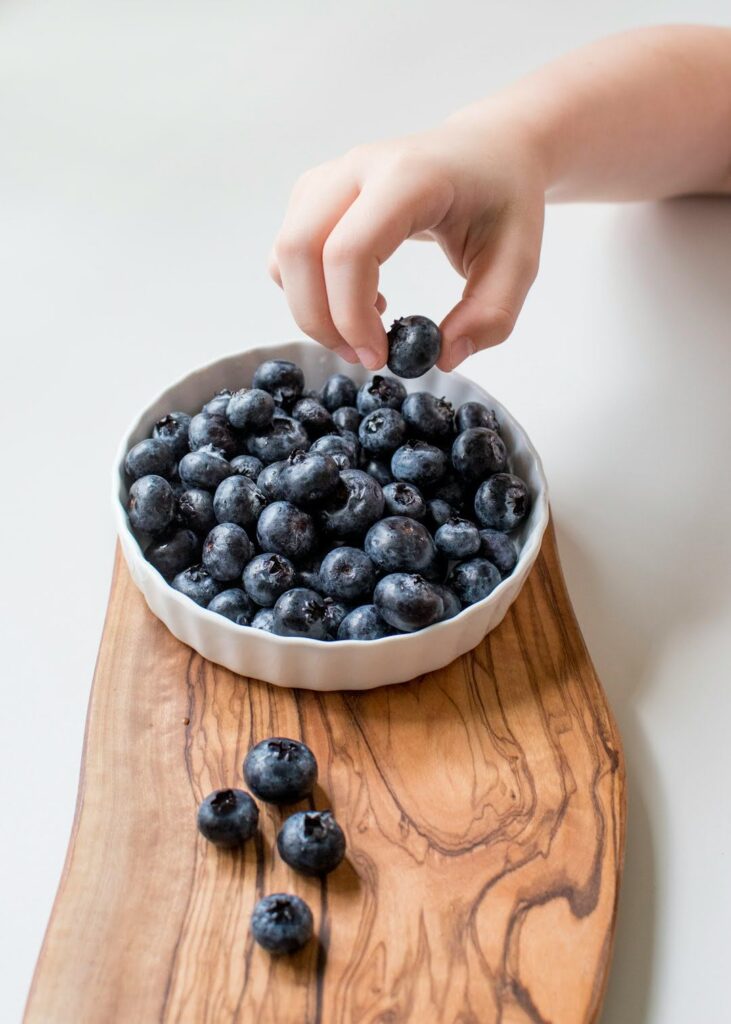
Focus on Fiber-Rich Foods:
Fiber is your friend when it comes to blood sugar management. Foods high in fiber, such as whole grains, legumes, and vegetables, slow the absorption of sugar, ensuring a more gradual release of glucose into your bloodstream. This not only helps maintain stable blood sugar levels but also supports digestive health.
Prioritize Protein:
Including sufficient protein in your meals is crucial. Protein slows down the breakdown of carbohydrates, resulting in a steadier release of sugar into your bloodstream. Good sources of protein include lean meats, fish, eggs, dairy products, beans, and nuts. Try adding a piece of grilled chicken to your salad or a handful of almonds to your snack routine.
Incorporate Healthy Fats:
Don’t shy away from healthy fats! They play a vital role in blood sugar regulation. Healthy fats, such as those found in avocados, olive oil, and fatty fish, can help slow the absorption of sugar into your bloodstream. Consider adding a drizzle of olive oil to your vegetables or a few slices of avocado to your toast.
Balance Carbohydrates with Protein and Fat:
When enjoying carbohydrate-rich foods, balance them with protein and healthy fats. This combination can prevent rapid spikes in blood sugar levels. For instance, if you’re having oatmeal for breakfast, add a spoonful of nut butter or some chia seeds to keep your glucose levels stable.
Stay Hydrated:
Hydration is often overlooked but plays a significant role in maintaining stable blood sugar levels. Drinking enough water helps your kidneys flush out excess sugar through urine and assists in overall bodily functions. Aim for at least 8 glasses of water a day, and more if you’re active or live in a hot climate.
By making these strategic adjustments to your diet, you can create a balanced nutritional environment that supports stable blood sugar levels, paving the way for optimal fertility. Keep in mind that small, consistent changes can lead to significant health benefits over time.
Lifestyle Changes to Improve Blood Sugar and Boost Fertility
Making strategic lifestyle changes can be an empowering way to manage your blood sugar levels and improve your fertility. It’s about committing to habits that support your overall well-being, which in turn can enhance your reproductive health.

1. Embrace Regular Exercise: Physical activity helps your body utilize insulin more efficiently, aiding in blood sugar management. Aim for a mix of aerobic exercises, like swimming or brisk walking, and strength training. Regular movement not only stabilizes glucose levels but also boosts your mood and energy, essential factors for fertility.
2. Prioritize Sleep: Quality sleep is pivotal for maintaining hormonal balance. Poor sleep can wreak havoc on your blood sugar levels and disrupt the delicate balance of reproductive hormones. Strive for 7-9 hours of uninterrupted sleep each night to support both your endocrine system and fertility.
3. Manage Stress Effectively: Chronic stress can lead to elevated blood sugar levels, adversely affecting your fertility. Incorporate stress-reducing practices into your daily routine, such as mindfulness meditation, yoga, or even deep-breathing exercises. Managing stress can help stabilize insulin levels and support reproductive health.
4. Stay Hydrated: Drinking plenty of water helps regulate your blood sugar levels by aiding kidney function and reducing the likelihood of dehydration-induced peaks and troughs in glucose levels. Aim for at least 8 glasses of water a day for optimal hydration and overall health.
5. Avoid Smoking and Limit Alcohol: Smoking can lead to insulin resistance, escalating blood sugar issues. Similarly, excessive alcohol intake can cause significant fluctuations in blood glucose. By avoiding smoking and drinking in moderation, you’re taking a major step towards regulating blood sugar and enhancing your fertility.
Building these habits can make a significant difference in your journey towards better blood sugar control and improved fertility. Remember to consult with a healthcare professional before making any significant lifestyle changes to ensure they’re right for you.
The Impact of High and Low Blood Sugar on Hormones
High or low blood sugar levels can have a profound effect on your body’s hormonal balance. When your blood sugar spikes, your body releases insulin to help bring those levels back down. However, consistently elevated blood sugar levels can lead to insulin resistance. This means your cells don’t respond as well to insulin, causing your pancreas to produce even more. This constant cycle can disrupt the delicate balance of hormones needed for ovulation and regular menstrual cycles, making conception more challenging.
On the other hand, low blood sugar levels can be equally problematic. When your blood sugar drops too low, your body releases cortisol, the stress hormone, to help bring it back up. Chronic low blood sugar can lead to elevated cortisol levels over time, which can interfere with your adrenal function. This imbalance can lead to depleted sex hormones and reduced thyroid function, both of which are crucial for reproductive health.
The good news is that managing your blood sugar levels can help restore hormonal balance. By adopting a balanced diet and making lifestyle changes to stabilize your blood sugar, you can improve your overall hormonal health and increase your chances of conception. Understanding the connection between blood sugar management and hormonal balance is key to boosting your fertility.
Creating a Balanced Diet for Optimal Blood Sugar and Fertility
Crafting a balanced diet is essential for keeping your blood sugar levels stable, which is vital for boosting fertility. Start by incorporating more whole, nutrient-dense foods into your meals. Think of whole grains like quinoa, brown rice, and oats; these are complex carbohydrates that release glucose slowly, preventing blood sugar spikes.
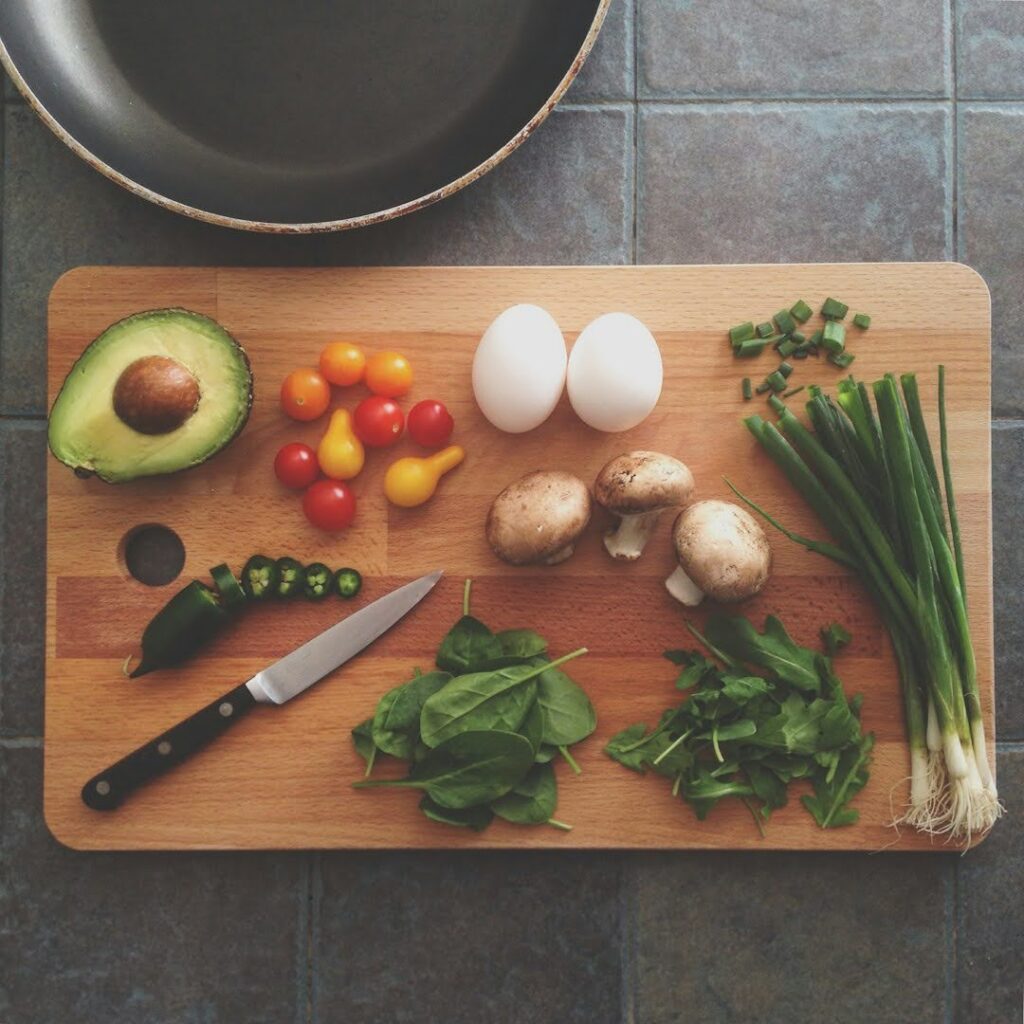
Proteins and Healthy Fats: Adding lean proteins such as chicken, fish, tofu, and legumes can help stabilize blood glucose levels. Don’t forget about healthy fats, either. Avocados, nuts, seeds, and olive oil not only support blood sugar balance but also contribute to reproductive health.
Fiber-Rich Foods: Vegetables and fruits are excellent sources of fiber, which can slow down the absorption of sugar and keep your levels steady. Opt for non-starchy vegetables like leafy greens, bell peppers, and broccoli. Berries, apples, and pears are good fruit choices due to their lower glycemic index.
Hydration: Staying well-hydrated plays a role in maintaining stable blood sugar levels. Water aids in the digestion and absorption of nutrients, ensuring that your blood sugar doesn’t dip or spike unexpectedly.
Meal Timing: Consistent meal timing can also help in regulating blood sugar. Instead of skipping meals or having long gaps between eating, aim for balanced meals and snacks throughout the day to provide a steady flow of energy to your body.
Incorporating these dietary habits can help you maintain balanced blood sugar levels, which is key to optimizing your fertility. Consult with a fertility dietitian to tailor a diet plan that suits your specific needs and goals.
Looking for more Support?
If you want a done-for-you fertility meal plan designed with optimal blood sugar in mind, be sure to check out our popular four-week fertility meal plan right here!
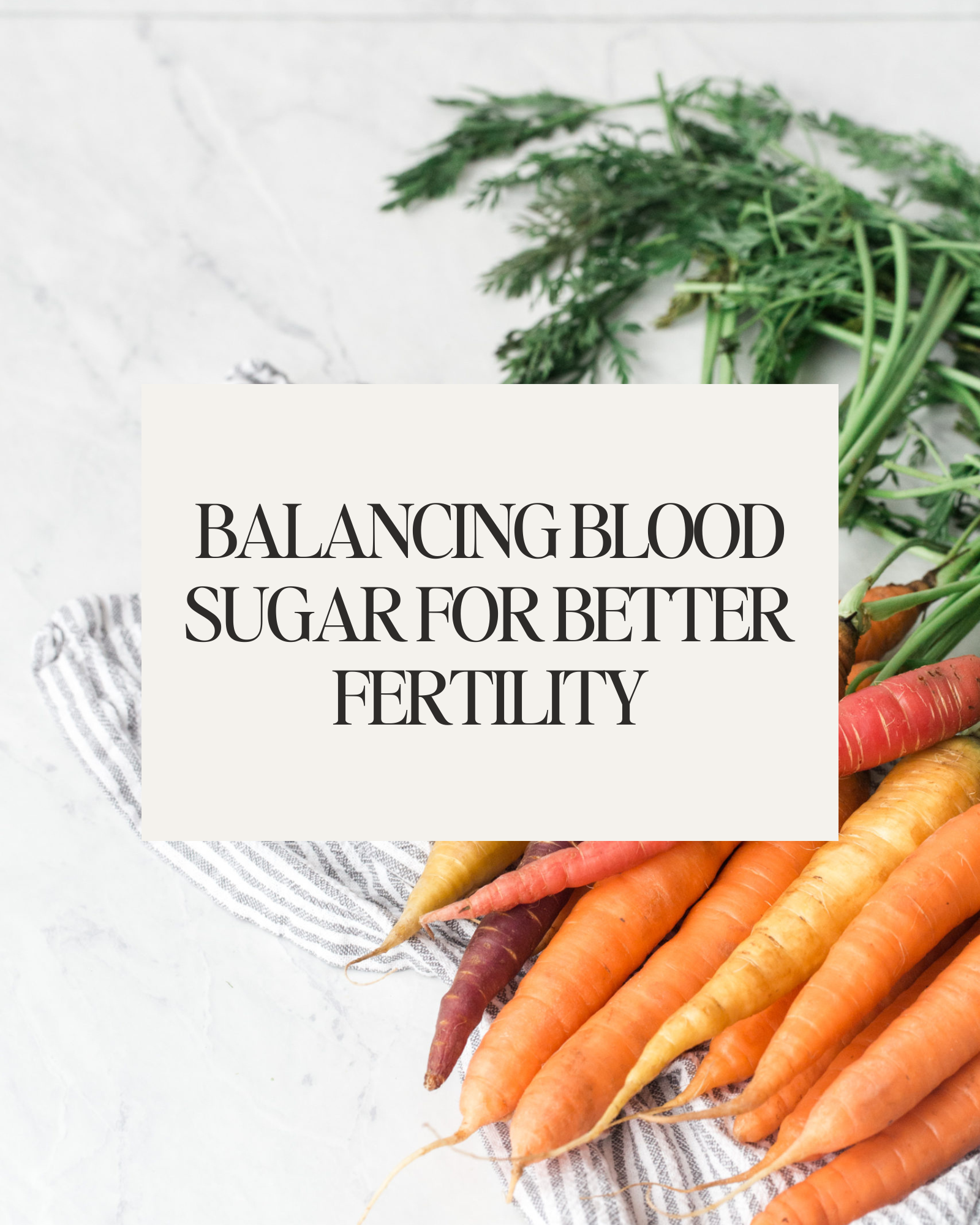
Understanding PCOS and Fertility Challenges
Polycystic ovary syndrome (PCOS) is a condition that affects a woman’s hormone levels, leading to a myriad of health issues including infertility. Women with PCOS produce higher-than-normal amounts of male hormones, which can cause skipped menstrual periods and make it harder to get pregnant.
One of the main challenges of PCOS is insulin resistance. Many women with PCOS have difficulty using insulin effectively, which increases their risk of Type 2 diabetes. Elevated insulin levels can also increase androgen production, exacerbating symptoms like irregular periods and ovulatory dysfunction.
Further complicating the picture, recent research has highlighted the role of gastrointestinal flora in PCOS. Alterations in gut bacteria may lead to chronic inflammation and malabsorption, further impacting metabolic and reproductive health. This chronic inflammation is believed to underpin both insulin resistance and ovarian dysfunction, clearly illustrating the complexity of PCOS.
Infertility in women with PCOS is often due to anovulation, where the ovaries do not release an egg during a menstrual cycle. This can be deeply frustrating for those trying to conceive. However, the pathway to managing these fertility challenges lies in a holistic approach involving lifestyle changes, medications, and crucially, the right supplements.
The Role of Supplements in Boosting PCOS Fertility
When grappling with Polycystic Ovary Syndrome (PCOS), understanding how supplements can support your fertility journey can make a significant difference. Supplements often serve as the necessary booster shot, nurturing your body’s complex systems to better handle the challenges of PCOS. So, which supplements should you consider?
Firstly, let’s explore the importance of Inositol, an essential component for managing PCOS symptoms and enhancing fertility. Inositol, particularly in the forms of myo-inositol and D-chiro-inositol, has garnered attention for its benefits like reducing blood triglyceride levels, improving insulin function, and even promoting ovulation. Combining inositol with folic acid might offer even greater advantages, including a reduced risk of gestational diabetes and preterm birth.
Another standout is Vitamin D. This ‘sunshine vitamin’ not only supports bone health but also plays a crucial role in maintaining regular menstrual cycles and promoting healthy ovulation. Studies indicate that women with PCOS often have lower levels of Vitamin D, so supplementing can bridge this gap, helping to regulate your cycle and improve your fertility prospects.
Omega-3 fatty acids deserve a special mention too. These healthy fats are pivotal in reducing the inflammation often associated with PCOS. Additionally, Omega-3s have been shown to balance hormones, thereby improving the chances of ovulation and subsequently increasing fertility. Sources of Omega-3s include fish oil supplements, flaxseeds, and chia seeds.
Lastly, consider adding antioxidants like Coenzyme Q10 (CoQ10) and Vitamin E to your regimen. These supplements combat oxidative stress, a factor that can negatively impact ovarian health. By incorporating antioxidants, you create a healthier environment for your eggs, enhancing their quality and your overall reproductive health.
Top Vitamins for Enhancing Fertility in Women with PCOS
When it comes to boosting fertility, certain vitamins can make a significant difference, especially for women dealing with PCOS. Each vitamin plays a unique role in supporting reproductive health and managing symptoms associated with PCOS.
Vitamin B9 (Folate): Folate, commonly known as vitamin B9, is crucial for anyone trying to conceive. Not only does it help prevent neural tube defects in developing fetuses, but folate also plays a vital role in DNA synthesis and repair, which is essential for healthy egg development. Women with PCOS who take folate supplements may experience improved ovulation and a reduced risk of gestational complications.
Vitamin B12: Vitamin B12 works in tandem with folate to ensure proper cellular function and fertility. This vitamin is particularly important for maintaining healthy red blood cells and nerve function. A B12 deficiency can lead to increased levels of homocysteine, a substance that, in high levels, can impair fertility. Supplementing with B12 can help manage homocysteine levels and, consequently, support a more favorable environment for conception.
Vitamin E: Known for its antioxidant properties, vitamin E is pivotal in protecting reproductive cells from oxidative stress. Oxidative stress can damage eggs and sperm, reducing the chances of successful fertilization. By including vitamin E in your supplement regimen, you may enhance the quality of your eggs, thus improving your fertility prospects.
Vitamin C: Another powerful antioxidant, vitamin C, plays a significant role in hormone regulation and immune function. For women with PCOS, vitamin C can help boost progesterone levels and enhance overall hormonal balance. This is crucial for regular menstrual cycles and optimal fertility. Additionally, vitamin C is vital for the formation of the endometrial lining, where a fertilized egg implants and grows.
Omega-3 Fatty Acids: Including omega-3 fatty acids in your diet can work wonders for your fertility health. Rich in anti-inflammatory properties, these fatty acids are essential for maintaining hormonal balance and improving insulin sensitivity — a common issue in women with PCOS. Omega-3 supplements can also help reduce the occurrence of ovarian cysts and improve blood flow to the reproductive organs.
Integrating these vitamins into your daily routine can provide a substantial boost to your fertility, serving as a supportive foundation as you navigate the complexities of PCOS. Always consult your healthcare provider before starting any new supplementation regimen to ensure it’s tailored to your specific needs.
The Power of Inositol: A PCOS Fertility Game-Changer
Inositol, a type of sugar related to the B-vitamin family, has shown immense potential in the management of PCOS-related fertility challenges. Often categorized into myo-inositol and D-chiro-inositol, these naturally occurring compounds play a significant role in the regulation of insulin and hormone levels.
Numerous studies highlight inositol’s efficacy. For instance, myo-inositol has been found to improve insulin sensitivity, a critical factor because insulin resistance is a common issue among women with PCOS. By enhancing insulin function, myo-inositol helps lower insulin levels, which in turn can reduce androgen levels – often responsible for symptoms like irregular periods and ovarian cysts.
Notably, inositol doesn’t just stop at regulating insulin. It also significantly improves ovulation rates and menstrual regularity. This is crucial for women trying to conceive, as regular ovulation increases the likelihood of successful fertilization. Combining myo-inositol with D-chiro-inositol has been particularly effective, with research suggesting this duo can restore ovary function and bring metabolic balance.
For those concerned about safety, inositol is generally well-tolerated. Current research supports its use as both an effective and safe treatment option for PCOS. The combination of myo-inositol and folic acid is particularly noteworthy, offering benefits like reduced blood triglyceride levels and improved blood pressure, alongside its fertility-boosting capabilities.
Whether you’re hoping to manage PCOS symptoms better or actively trying to conceive, inositol offers a promising, natural pathway to improved reproductive health. Always consult with a healthcare professional to ensure it’s suitable for your specific scenario.
The Benefits of Vitamin D for PCOS and Fertility
Vitamin D, often dubbed the “sunshine vitamin,” plays a pivotal role in various bodily functions, including hormone regulation and reproductive health. For women grappling with PCOS, adequate levels of Vitamin D can offer significant benefits.
Additionally, Vitamin D plays a critical role in reducing inflammation, which is often a concern in PCOS. This reduction in inflammation can help manage symptoms and improve your reproductive health. Elevated inflammatory markers are common in women with PCOS and addressing these can boost your chances of conception.
Not to mention, Vitamin D is also essential for maintaining bone health, which can sometimes be compromised in women with hormonal imbalances. Ensuring adequate levels of this vitamin can be a simple yet effective way to support your fertility journey.
In conclusion, while the benefits of Vitamin D for overall health are numerous, its specific role in enhancing insulin sensitivity and promoting a regular menstrual cycle makes it a powerful supplement in the battle against PCOS-related fertility challenges.
How Omega-3 Fatty Acids Can Improve PCOS Symptoms
Omega-3 fatty acids are essential fats that your body can’t produce on its own, often found in foods like fish, flaxseeds, and walnuts. These fats play a key role in managing PCOS symptoms and improving overall fertility.
Reduces Inflammation: Chronic inflammation is a common issue for individuals with PCOS. Omega-3s have anti-inflammatory properties that can help reduce this inflammation, which in turn may alleviate some symptoms of PCOS.
Improves Insulin Sensitivity: Women with PCOS often struggle with insulin resistance, and Omega-3 fatty acids can enhance insulin sensitivity. This helps in managing blood sugar levels and reducing the risks associated with insulin resistance, such as Type 2 diabetes.
Balances Hormones: The hormone-balancing effect of Omega-3s can be particularly beneficial. These fatty acids can reduce levels of androgens (male hormones) which are often elevated in women with PCOS, leading to symptoms like acne, hair loss, and hirsutism (excess body hair).
Supports Heart Health: Heart disease risk is higher in women with PCOS due to factors like high blood pressure, high cholesterol, and obesity. Omega-3 fatty acids help lower blood pressure, reduce triglycerides, and improve overall cardiovascular health.
To reap these benefits, you might consider taking Omega-3 supplements such as fish oil. Always consult with your healthcare provider before starting any new supplement to ensure it’s appropriate for you.
NAC: N-Acetyl Cysteine NAC, a potent antioxidant, has shown promise for improving insulin sensitivity, a major concern for women with PCOS. By helping to regulate blood sugar levels, NAC can potentially enhance overall fertility. It also plays a crucial role in reducing oxidative stress, which can be a contributing factor to infertility in PCOS patients.
Furthermore, research suggests that NAC may assist with ovulation. One study found that women with PCOS who took NAC experienced a higher rate of ovulation compared to those who didn’t. This can be particularly beneficial for those trying to conceive, as regular ovulation is key to increasing the chances of pregnancy.
In addition to its fertility benefits, NAC can also support liver health, which is often compromised in individuals with PCOS due to increased fat storage and inflammation. By boosting glutathione production, an essential antioxidant for detoxifying the liver, NAC helps in maintaining overall liver function.
Overall, incorporating NAC into your supplement regimen could be a valuable step towards enhancing fertility and managing PCOS symptoms. However, it’s important to consult with a healthcare provider before starting any new supplement to ensure it aligns with your individual health needs.
Herbal Supplements: Natural Remedies for PCOS Fertility
Herbal supplements have long been used as natural remedies for various ailments, and PCOS fertility is no exception. Many women with PCOS turn to herbal solutions not only for their potential efficacy but also because they often come with fewer side effects than pharmaceutical options.
Vitex (Chaste Tree Berry)
Vitex agnus-castus, commonly known as chaste tree berry, is one of the most popular herbal supplements for women with PCOS. It helps balance hormone levels by regulating the pituitary gland, which controls the production of several key hormones. Studies suggest that Vitex can increase progesterone levels and potentially improve menstrual regularity and ovulation.
Maca Root
Maca root is another well-known herb used for balancing hormones and enhancing fertility. Native to Peru, this adaptogenic herb may help regulate hormone imbalances, support adrenal function, and improve overall energy levels. Women with PCOS often report reduced symptoms and improved menstrual cycle regularity after consistent use of maca root.
Cinnamon
Cinnamon is not just a flavorful spice; it can also be beneficial for women with PCOS. Research indicates that cinnamon may help improve insulin sensitivity, which is often compromised in women with PCOS. Improved insulin sensitivity can lead to better regulation of hormones and, consequently, enhanced fertility.
Spearmint Tea
Spearmint tea is another natural remedy that has shown promise in addressing PCOS symptoms. Drinking spearmint tea regularly can help lower testosterone levels, which can reduce unwanted hair growth and improve the menstrual cycle. Sipping on this refreshing tea may provide comfort while contributing to hormonal balance.
Tribulus Terrestris
Tribulus terrestris is an herb often used in traditional medicine to improve fertility and sexual health. Some studies suggest that Tribulus can help stimulate ovulation and normalize menstrual cycles, making it a useful herbal supplement for women with PCOS.
When considering herbal supplements, it’s essential to consult with a healthcare provider to ensure they’re appropriate for your specific situation. While herbs can offer a gentle and natural approach to managing PCOS symptoms and improving fertility, they can interact with other medications and should be used with caution.
Consulting Your Healthcare Provider Before Starting Supplements
Before you introduce any supplement into your routine, it’s crucial to have a conversation with your healthcare provider. This is particularly important for women with PCOS, as individual health profiles and specific needs vary widely. By consulting with a healthcare professional, you can tailor your supplement regimen to ensure safety and effectiveness.
Discussing any new supplement, like inositol, with your doctor will help determine the appropriate dosage and form that’s best for you. Inositol supplements, for instance, are generally well-tolerated but varying dosages can influence their effectiveness and potential side effects. Your healthcare provider can guide you on the right path, taking into account your medical history and existing treatments.
Moreover, it’s essential to consider safety, especially if you are pregnant, planning to conceive, or breastfeeding. While some supplements can offer numerous health benefits, more research is needed to confirm their safety in these specific conditions. Consulting your doctor ensures that you are making informed choices that support your reproductive health goals without compromising your well-being.
In sum, while supplements can be a valuable addition to managing PCOS and enhancing fertility, professional guidance is key. This step not only optimizes your health journey but also provides peace of mind, knowing that your approach is both safe and personalized.
Key Takeaways:
To boost fertility in women with PCOS, certain supplements can make a significant difference. Inositol, particularly, stands out as a game-changer, potentially improving ovarian function and boosting fertility. Similarly, Vitamin D plays a crucial role in regulating menstrual cycles and improving insulin resistance, both vital for managing PCOS symptoms.
Omega-3 fatty acids contribute to reducing inflammation and regulating hormone levels, further enhancing fertility prospects. Herbal supplements like Vitex, Maca Root, Cinnamon, Spearmint Tea, and Tribulus Terrestris offer natural solutions to balance hormones and support reproductive health.
Remember, it’s essential to consult with your healthcare provider before starting any supplement regimen. This ensures the chosen supplements align with your unique health needs and treatment plans.
In summary, while supplements can provide significant benefits, they should be a part of a comprehensive approach that includes a balanced diet, regular exercise, and medical guidance. Always prioritize safety and informed choices in your fertility journey.
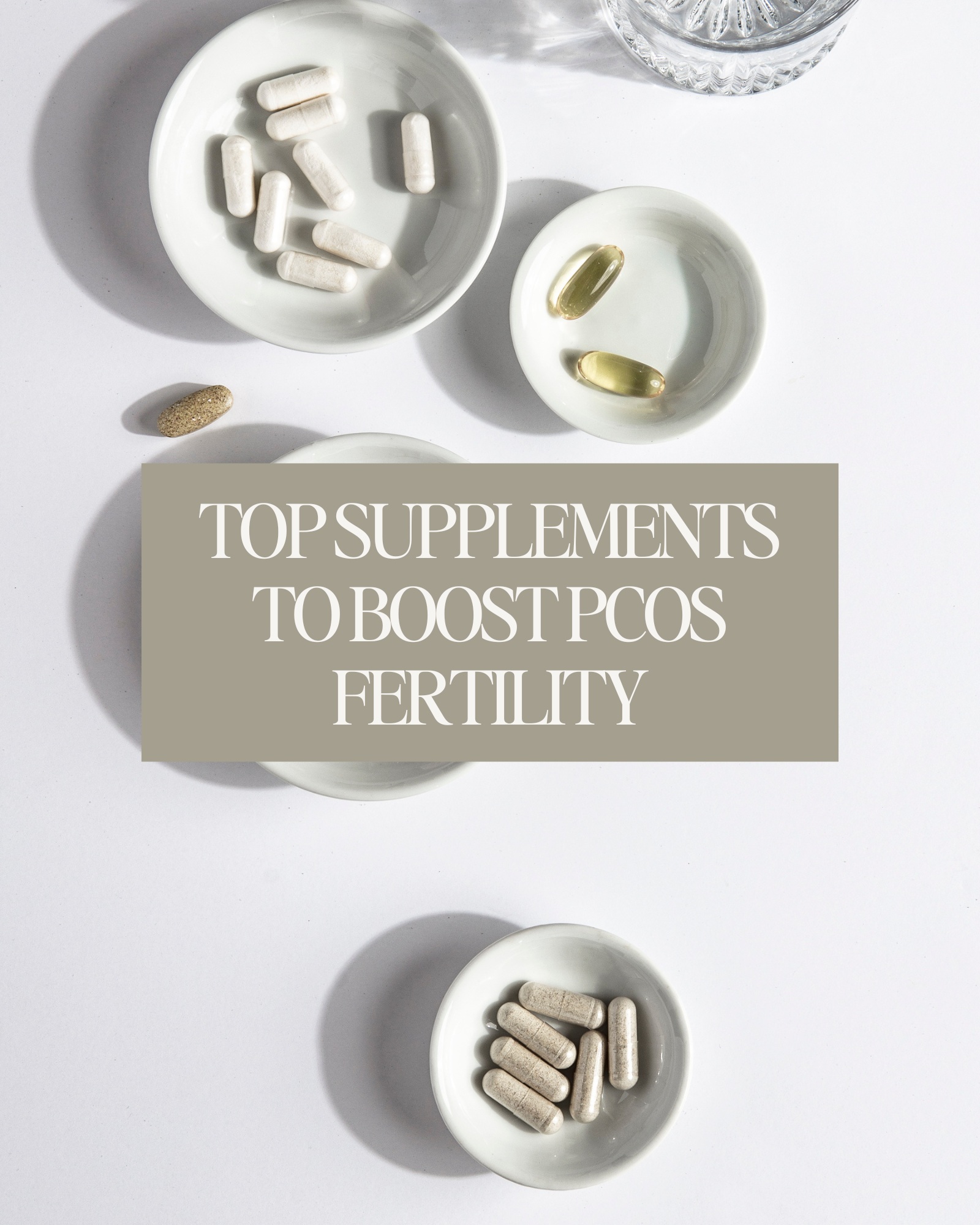
Many women with PCOS struggle to find an effective treatment plan due to its complex nature. However, recent research has begun to shine a light on the crucial role the gut microbiome plays in managing this condition. Your gut does more than just digest food; it influences hormone regulation, inflammation, and even your overall metabolic health.
This article dives into how optimizing your gut health can significantly impact PCOS management. From understanding the gut-hormone link to practical dietary changes you can make, you’ll gain valuable insights to improve your wellbeing.
Understanding PCOS: A Brief Overview
Polycystic Ovary Syndrome (PCOS) affects a significant portion of women around the world, with implications that go beyond just the reproductive system. At its core, PCOS is a hormonal disorder known for causing irregular menstrual cycles, excess androgen levels, and polycystic ovaries. But, it doesn’t stop there. This complex condition often brings a host of other challenges, including insulin resistance, obesity, type 2 diabetes, and cardiovascular issues.
The exact cause of PCOS remains a subject of ongoing research, but genetics and lifestyle factors both appear to play substantial roles. Women with PCOS frequently exhibit elevated insulin levels, which can exacerbate symptoms and contribute to the imbalance of sex hormones. What’s more, the syndrome can profoundly impact mental health, leading to conditions like anxiety and depression.
With no known cure, managing PCOS involves a combination of lifestyle modifications, dietary adjustments, and medical treatments tailored to alleviate specific symptoms. Because PCOS affects different women in different ways, it’s crucial to approach treatment on an individualized basis. In recent years, emerging studies have started to explore the connection between gut health and PCOS, revealing that a balanced gut microbiome might be an essential key to managing this disorder.

The Gut-Health Connection: Why It Matters
Your gut health doesn’t just affect your digestion; it has a profound impact on your overall well-being. The human gut microbiome, an ecosystem of trillions of bacteria, fungi, and other microorganisms, plays a crucial role in many bodily functions. Notably, it helps regulate metabolism, supports the immune system, and maintains the structural integrity of the gut lining.
But the relationship between gut health and conditions like Polycystic Ovary Syndrome (PCOS) is particularly interesting. The gut-brain axis, a complex communication network that links your gut and brain, further illustrates this connection. When your gut microbiota is in balance, it positively influences hormonal health, which is central to managing PCOS symptoms.
Emerging research highlights how an imbalance in the gut microbiota, also known as dysbiosis, can exacerbate PCOS symptoms. Dysbiosis has been linked to increased inflammation, insulin resistance, and hormonal imbalances—all of which are critical factors in PCOS. This makes maintaining a healthy gut not just a recommendation, but a necessity for those managing PCOS.
Moreover, factors like diet, sleep, and exercise play a significant role in shaping your gut microbiome. Consuming a diet rich in diverse, fiber-rich foods, getting quality sleep, limiting alcohol intake, and engaging in regular physical activity can all foster a healthier gut. By focusing on these areas, you can support your gut health and, in turn, help manage PCOS more effectively.
How Gut Bacteria Influence Hormonal Balance
In understanding gut health’s role in PCOS, it’s essential to dive into the relationship between gut bacteria and inflammation. Gut microbiota plays a crucial role in regulating hormones and metabolism. When your gut microbiota is unbalanced, it can lead to chronic inflammation, a common issue in those with PCOS. But how exactly does this happen?
Your gut lining serves as a barrier, preventing harmful substances from entering your bloodstream. However, an imbalanced gut microbiota can weaken this barrier, allowing toxins and bacteria to escape into your system. This phenomenon, known as “leaky gut,” triggers your immune system to react, leading to chronic inflammation.
This inflammation doesn’t just stay localized in your gut. It can spread throughout your body, affecting various organs and tissues, including your ovaries. Chronic inflammation can exacerbate the symptoms of PCOS by disrupting your hormonal balance. For example, inflammation can impair insulin signaling, leading to insulin resistance – a hallmark of PCOS.
Moreover, hyperandrogenism, or elevated levels of male hormones, is closely linked to gut health. Research indicates that your gut microbiota can influence sex hormone production. In those with PCOS, an imbalanced gut microbiota may contribute to increased testosterone levels, worsening symptoms like excess hair growth, acne, and menstrual irregularities.
Addressing inflammation through gut health can be a powerful strategy. By focusing on a diet rich in anti-inflammatory foods, you can help restore balance to your gut microbiota. Probiotics, prebiotics, and other dietary supplements may also play a vital role in reducing inflammation and supporting a healthier hormonal balance.
The Role of Inflammation in PCOS and Gut Health
Chronic inflammation is a known factor in the development of PCOS. Chronic inflammation is a hallmark of PCOS, often linked to an imbalance in gut microbiota. When your gut bacteria are out of balance, it can lead to increased intestinal permeability, commonly known as “leaky gut.” This condition allows toxins and partially digested food particles to enter the bloodstream, triggering an immune response and chronic inflammation.
This persistent inflammation can exacerbate insulin resistance, a common feature in PCOS. Insulin resistance leads to elevated blood sugar levels, which in turn can cause the body to produce more insulin. High insulin levels stimulate the ovaries to produce more androgens, contributing to symptoms such as irregular menstrual cycles, acne, and hirsutism.
Moreover, chronic inflammation influences ovarian function and insulin sensitivity through various biochemical pathways. For instance, certain inflammatory markers like IL-22 have been shown to affect ovarian granulosa cells, which are crucial for hormone production and ovarian health. Inflammatory cytokines can also disrupt the normal functioning of the ovaries, potentially worsening PCOS symptoms.
It’s also worth noting that Vitamin D deficiency, commonly observed in PCOS patients, can further exacerbate inflammation. Vitamin D has anti-inflammatory properties, and its lack can lead to an increase in inflammatory responses, thereby worsening both gut health and PCOS symptoms. It is also known that Women with PCOS often have altered gut microbiota compared to those without PCOS.
Given this intricate relationship, addressing inflammation by improving gut health can be a promising approach to managing PCOS. Incorporating anti-inflammatory foods, probiotics, and dietary changes can help maintain a balanced gut microbiota, reduce intestinal permeability, and ultimately mitigate the inflammatory processes that contribute to PCOS.
Recognizing the Signs of Poor Gut Health
Recognizing the signs of poor gut health is crucial in managing PCOS effectively. You might wonder what symptoms to look out for. Here’s a quick guide to help you identify potential gut issues:
- Digestive discomfort: Frequent bloating, gas, diarrhea, or constipation could indicate an imbalance in your gut microbiota.
- Food intolerances: If you notice increased sensitivity to certain foods, it might be linked to gut health issues.
- Fatigue: Chronic tiredness can be a sign that your gut is not absorbing nutrients properly.
- Skin conditions: Issues like eczema or acne can be linked to gut health, as inflammation in the gut often manifests on the skin.
- Mood changes: An unbalanced gut microbiota can lead to abnormal hormone changes, potentially contributing to anxiety and mood swings.
- Unintentional weight changes: Both weight gain and loss without any obvious reason can indicate a gut health problem.
It’s important to be attentive to such signs because they can be early indicators of more significant issues. If you experience any of these symptoms consistently, it might be time to take a closer look at your gut health, especially if you have PCOS.
Dietary Changes to Boost Gut Health for PCOS
Making the right dietary choices can significantly influence your gut health and, by extension, help manage symptoms of PCOS. Let’s delve into some practical and effective changes you can implement.
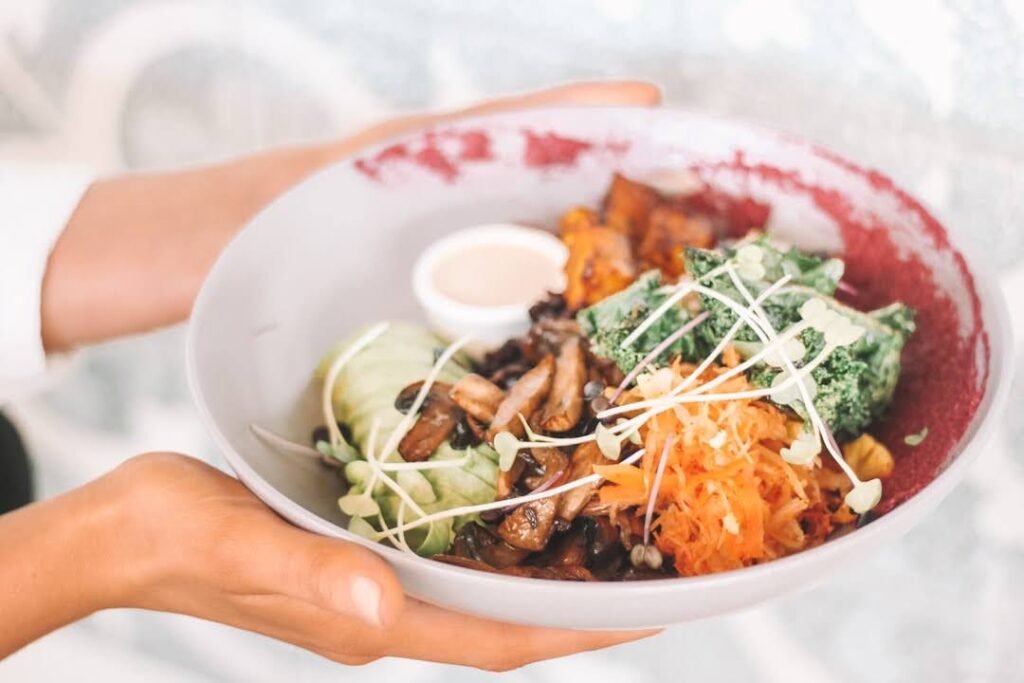
1. Incorporate Fiber-Rich Foods
Fiber acts as fuel for the beneficial bacteria in your gut. Eating a diet rich in fruits, vegetables, whole grains, and legumes can support these bacteria, which in turn helps regulate hormones and reduce inflammation. Aim to include at least 25-30 grams of fiber daily.
2. Add Fermented Foods
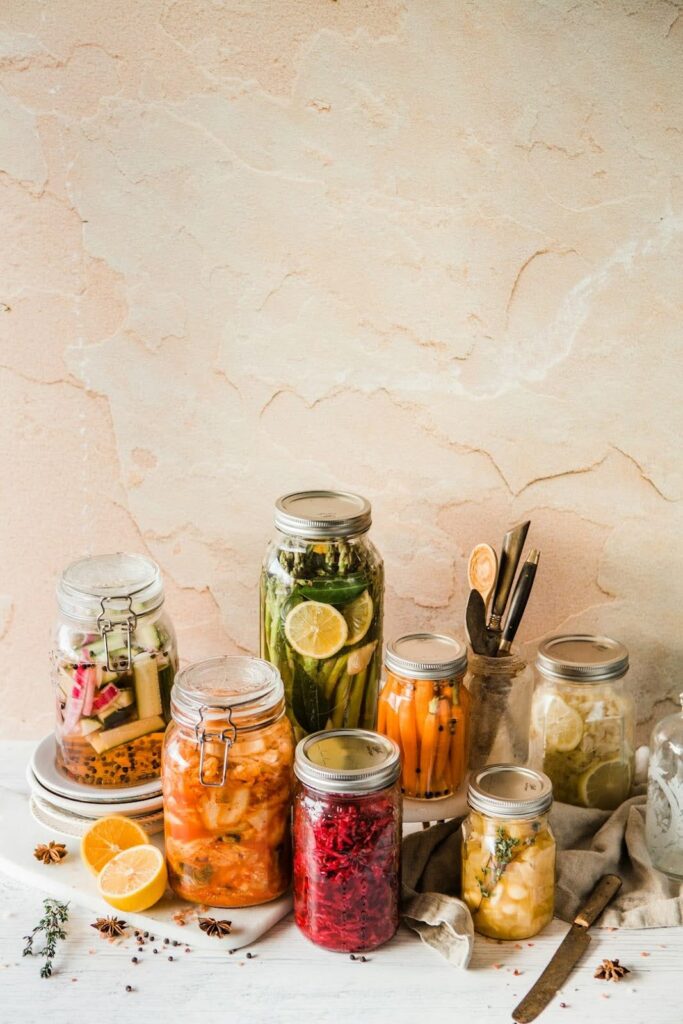
Fermented foods such as yogurt, kefir, sauerkraut, kimchi, and kombucha are brimming with probiotics. Regularly consuming these foods can help restore and maintain a healthy gut microbiota, crucial for managing PCOS symptoms. Probiotics, like bifidobacterium lactis V9, in particular, have shown promising results in improving gut health for women with PCOS.
3. Focus on Prebiotics
Prebiotics are non-digestible food ingredients that promote the growth of beneficial bacteria. Foods like garlic, onions, bananas, asparagus, and oats are excellent prebiotic sources. Integrating these into your diet can help nurture a healthy gut environment. Probiotics and prebiotics can positively influence gut microbiota.
4. Opt for Healthy Fats
Healthy fats, particularly those from omega-3 fatty acids, can reduce inflammation and support overall gut health. Include sources such as fatty fish (salmon, mackerel), flaxseeds, chia seeds, and walnuts in your meals to reap their benefits.
5. Minimize Processed Foods and Sugars
Highly processed foods and sugary snacks can promote harmful bacteria growth and contribute to gut dysbiosis. Steering clear of these foods can help maintain a balanced gut microbiome, which is crucial for managing PCOS effectively.
By making these dietary adjustments, you can create a supportive environment for your gut health, potentially alleviating some of the hormonal and metabolic challenges associated with PCOS. Remember, small, consistent changes can lead to significant improvements over time.
Supplements That Support Gut Health in PCOS
Supplements can play a significant role in supporting gut health, particularly for women managing PCOS. Integrating the right supplements into your routine can help rebalance your gut microbiota, leading to improved overall health.
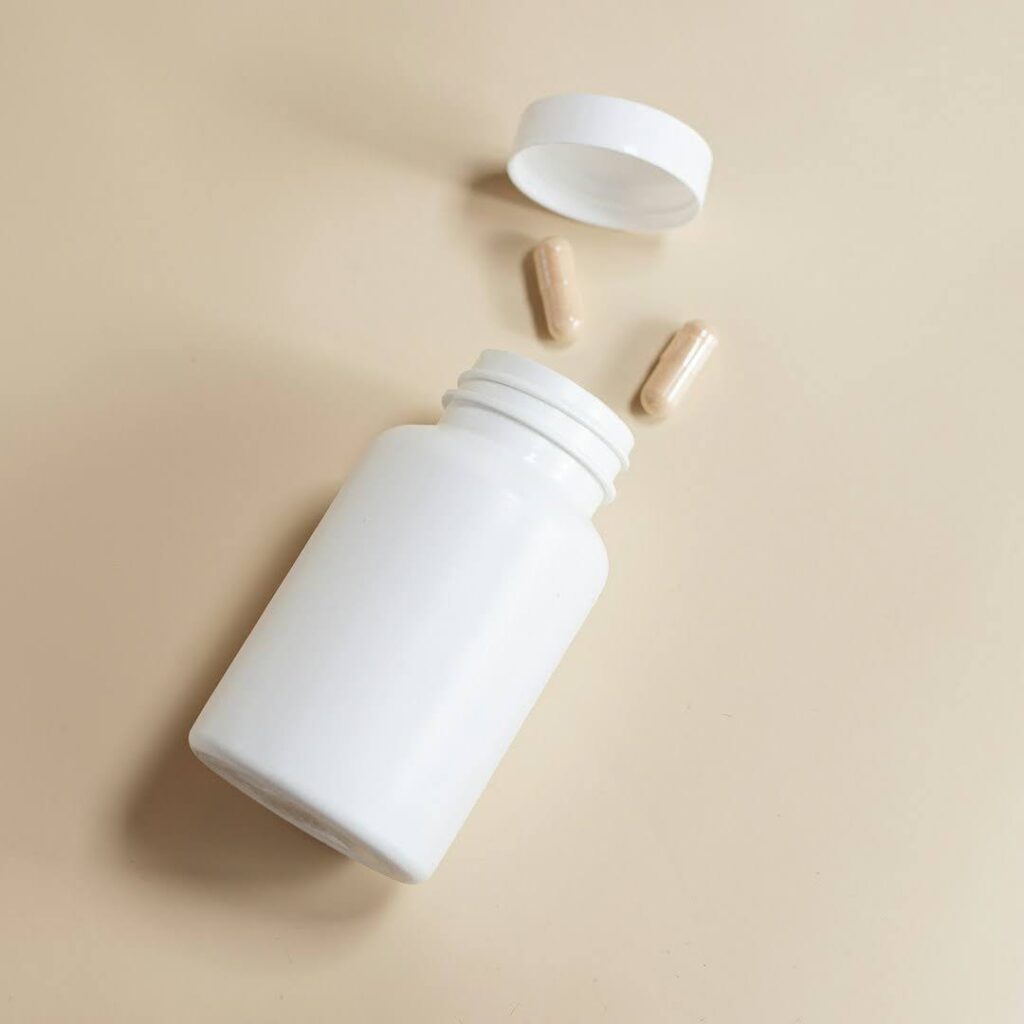
Probiotics
One of the most well-researched supplements for gut health is probiotics. Strains like Bifidobacterium lactis V9 have shown promise in improving gut health in women with PCOS. Probiotics can help restore the natural balance of gut bacteria, which in turn may enhance metabolic and reproductive functions. One of our favorites is Megaspore biotic – which you can find inside our supplement store right here.
Prebiotics
Prebiotics are another cornerstone of gut health. These are non-digestible fibers that fuel the growth of beneficial bacteria in your gut. Incorporating prebiotic supplements can create a more favorable environment for your gut microbiota, helping to improve hormonal balance and reduce inflammation, both crucial for managing PCOS.
Synbiotics
Combining probiotics and prebiotics, synbiotics offer dual benefits. By taking these supplements, you provide your gut with beneficial bacteria while ensuring they have the nutrients they need to thrive. This synergistic approach can be particularly effective for restoring gut microbiota diversity and improving PCOS symptoms.
Vitamin D
Emerging research suggests that Vitamin D might influence the occurrence of PCOS by affecting the composition of gut microbiota. Vitamin D supplementation could improve gut health and potentially alleviate some symptoms of PCOS by enhancing the microbiota balance. *It’s important to test vitamin D levels before supplementing, as you can go *too high* with this as well.
Getting Support with Your Gut Health and PCOS
If you’re looking for more support with managing your PCOS, improving your gut health, and preparing your body for a healthy pregnancy, reach out to our team of highly trained functional fertility nutritionists.
We utilize functional lab testing such as the GI MAP, to help uncover the root cause of your fertility struggles. We’ve worked with hundreds of women in our practice, and are here to support you!
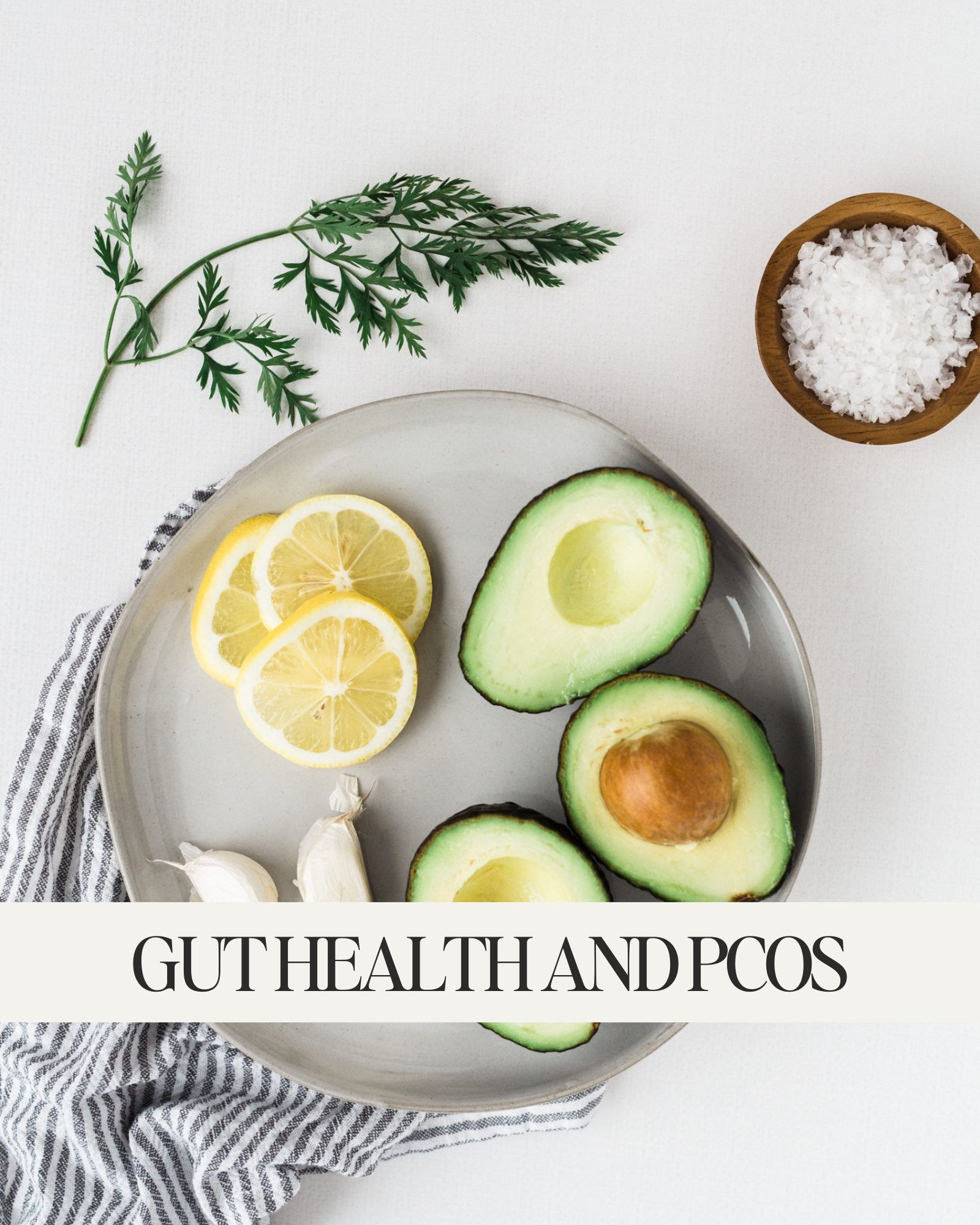
Polycystic Ovary Syndrome (PCOS) is a condition that can significantly affect a woman’s health and fertility, but diet plays a crucial role in managing its symptoms. For many women, questions arise about the impact of dairy on their condition. Contrary to popular belief, consuming dairy may not be harmful and can even offer benefits. Recent studies suggest that incorporating certain types of dairy could support hormonal balance and improve fertility. Let’s explore how you can make dairy work for you if you’re navigating life with PCOS.
The Role of Diet in Managing PCOS
Your diet has a profound impact on managing Polycystic Ovary Syndrome (PCOS). Maintaining a balanced and nutritious diet not only helps to alleviate symptoms but also supports overall well-being. One of the primary goals in managing PCOS through diet is stabilizing insulin levels, as insulin resistance is a common issue among women with this condition.
Dairy and Hormonal Balance: What You Need to Know
When discussing hormonal balance and PCOS, dairy often comes under scrutiny. However, it’s important to understand that no single dietary choice universally affects every woman in the same way. Dairy has gotten a bit of a bad rap in the realm of hormonal health, but recent research sheds a more nuanced light on its role, and probably let you to ask the question at some point: Can I eat dairy with PCOS?
The Hormonal Connection: Some studies suggest that dairy can influence hormone levels due to the presence of natural hormones in milk. Yet, this impact may not necessarily be negative. For instance, certain high-fat dairy products, like full-fat yogurt and cheese, contain beneficial nutrients that support hormonal balance. These include calcium, vitamin D, and various bioactive compounds that may aid in regulating your menstrual cycle and improving overall fertility. Dairy products provide essential nutrients like calcium, vitamin D, and protein, which are beneficial for reproductive health.
Additionally, dairy is a valuable source of protein, which plays a key role in managing blood sugar levels and insulin sensitivity – crucial aspects for women with PCOS. According to some findings, consuming high-fat dairy could enhance insulin sensitivity and promote more stable glucose levels, potentially mitigating some PCOS symptoms.
One study highlighted by Gunther et al. categorized 155 women by their dairy intake and observed lower fat accumulation in those with higher dairy consumption over a six-month follow-up period. This suggests that, for some, dairy might contribute to better weight management, another crucial factor for hormonal health.
To maximize the benefits, it’s advisable to opt for organic, pasture-raised, and whole-fat dairy products. These options minimize exposure to synthetic hormones and preservatives, offering a cleaner source of nutrition.
While dairy’s effects can vary based on individual tolerance and physiology, incorporating it mindfully might just provide the hormonal harmony you need for better fertility outcomes.
Recent Studies on Dairy and Fertility in Women with PCOS
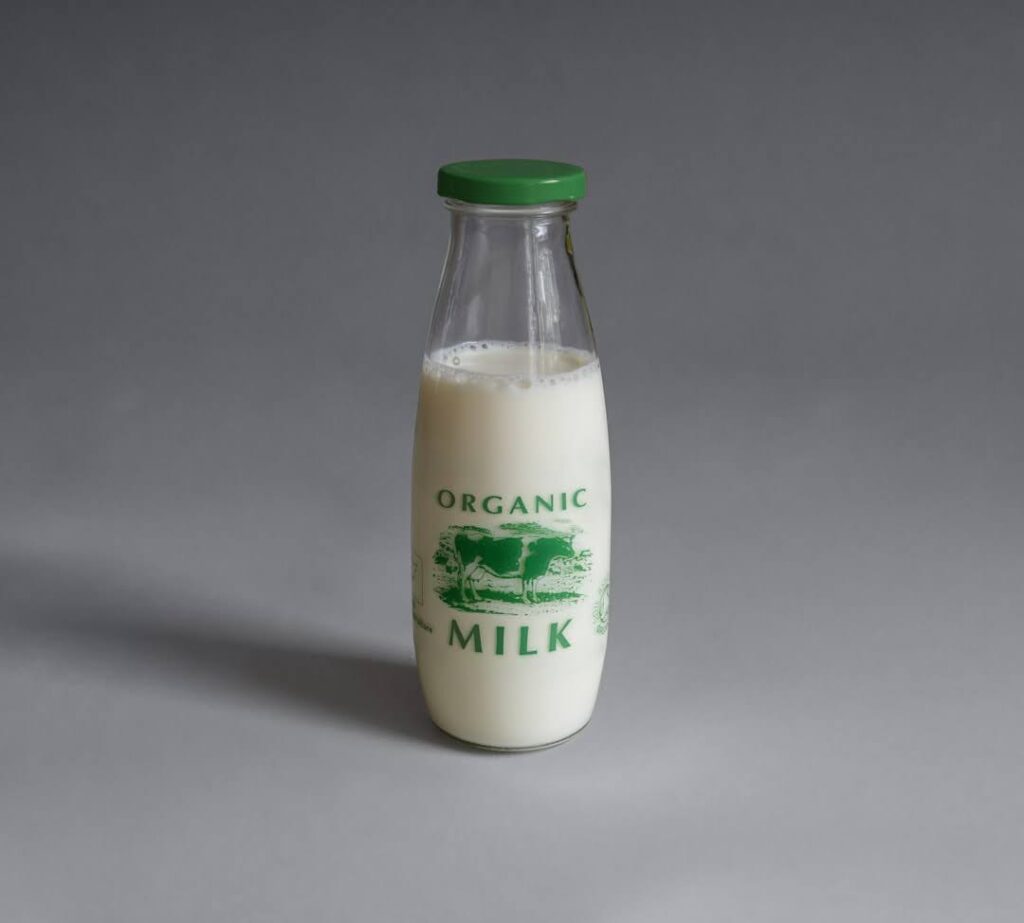
Recent research has highlighted the potential benefits of dairy consumption for women with PCOS, especially concerning fertility. A study conducted at Shahid Beheshti hospital clinic in 2013 involving 400 women explored the relationship between dairy intake and PCOS. The results were intriguing, suggesting that women who consume dairy products may experience fewer PCOS symptoms and improved fertility outcomes. High-fat dairy consumption is actually associated with a 27% lower risk of ovulatory infertility
Historically, the influence of dairy products on female fertility and ovulation has drawn considerable interest. Numerous studies have pointed toward a positive correlation, particularly with full-fat dairy products. These products, laden with healthy fats, can help regulate blood sugar levels, which is crucial for women with PCOS.
Interestingly, a prospective study examining dairy food intake and anovulatory infertility found that incorporating full-fat dairy into the diet may reduce the risk of this type of infertility. This is a significant finding, as anovulatory infertility is one of the primary reproductive challenges women with PCOS face. (Article: Women who consume full-fat dairy products have a 25% lower risk of infertility due to anovulation)
However, the existing body of research is not without its inconsistencies. While several studies suggest beneficial effects, others call for more comprehensive, randomized clinical trials to conclusively determine the impact of dairy on PCOS and related conditions like Type 2 Diabetes Mellitus (T2DM). Despite these inconsistencies, the overall trend appears promising.
Including dairy products in your diet could indeed be advantageous if you have PCOS. Many experts now advocate for the integration of milk and dairy products into the dietary plans of women with PCOS due to their beneficial effects on diabetes risk and their neutral or positive effects on ovulation and fertility.
Types of Dairy That May Boost Fertility
If you’re considering adding dairy to your diet to potentially boost fertility, it’s essential to choose the right types. According to research, full-fat dairy products may provide more benefits compared to their low-fat and fat-free counterparts. The higher fat content in full-fat dairy aids in better blood sugar regulation, a crucial factor for women with PCOS.
For starters, whole milk is an excellent option. Studies have indicated that consuming whole milk, rather than skim or low-fat versions, can significantly reduce the risk of ovulatory infertility. This is due to the presence of beneficial fatty acids that may enhance ovarian function.
Next, consider incorporating whole milk yogurt. Not only does it offer probiotic benefits for gut health, but it’s also packed with essential nutrients that support hormonal balance, such as calcium, magnesium, and vitamin D.
Organic full-fat cheese is another dairy product that may be beneficial. Rich in essential fats, vitamins, and protein, organic cheese can be a delicious and nutritious way to support your fertility journey. Remember to opt for organic versions to avoid potential hormonal disruptors found in non-organic dairy products.
Don’t forget about butter and cream. These often-overlooked dairy products can be healthful additions to your diet in moderation. They provide high-quality fats that are essential for maintaining hormonal health and improving the body’s insulin sensitivity, which is particularly important for managing PCOS symptoms.
Additionally, raw milk has been a subject of interest in various health and nutrition studies. One of the primary benefits often cited is its rich content of natural enzymes and probiotics. These enzymes, such as lactase, can aid in the digestion of lactose, potentially making raw milk easier to digest for some individuals who are lactose intolerant.
In summary, focusing on full-fat, organic dairy products like whole milk, yogurt, cheese, butter, and cream could be a strategic move in improving fertility outcomes for women with PCOS. However, always remember to monitor your body’s response and consult with a healthcare professional to tailor dietary choices to your specific needs.
How Much Dairy Should You Eat?
Determining the right amount of dairy can be a balancing act, especially when managing PCOS. Research suggests that moderate dairy consumption may benefit women with PCOS. For example, studies have indicated that consuming around 2.6 servings of dairy per day could lower the risk of type 2 diabetes by 21%. Additionally, another study reported a 30% lower risk when consuming 1.9 servings of low-fat dairy products daily.
But how do you translate this into your daily diet? A serving of dairy can be one cup of milk, one cup of yogurt, or around 1.5 ounces of cheese. Integrating these servings into your meals can be simple and enjoyable. Imagine starting your day with a yogurt parfait, using milk in your morning coffee, or adding a slice of cheese as a snack.
It’s crucial to choose the right type of dairy. Opt for organic, pasture-raised, and whole-fat products whenever possible, as these tend to have higher nutritional value. However, balance is key. Overconsumption of any food group can lead to unintended consequences, so moderation is essential. Aim to observe how your body responds to different amounts of dairy and adjust accordingly.
Lastly, while these guidelines can help you get started, remember to personalize your diet. Consulting with a dietitian or healthcare provider can provide tailored advice that aligns with your unique health profile and fertility goals. Regular check-ins will also help you monitor any changes or improvements, ensuring that your diet supports your overall well-being.
Myths and Facts About Dairy Consumption with PCOS

When it comes to dairy and PCOS, there is a whirlwind of myths that can leave you feeling confused. It’s important to separate fact from fiction to make informed choices that best support your health and fertility.
Myth: Dairy should be completely avoided if you have PCOS.
Fact: While some women may find that dairy exacerbates their symptoms, it is not a universal rule. Many women with PCOS can consume dairy without adverse effects. In fact, some studies suggest that full-fat dairy can be beneficial for hormonal balance and fertility.
Myth: Low-fat dairy is always the healthier choice.
Fact: Research indicates that full-fat dairy products may actually be more favorable for women with PCOS. The higher fat content helps with blood sugar regulation and may support overall hormonal balance, which can positively impact fertility.
Myth: All dairy products affect insulin resistance the same way.
Fact: Different types of dairy can have varying impacts on insulin resistance. While some studies suggest that low-fat dairy might exacerbate insulin resistance, other research shows that fermented dairy products like yogurt may reduce the risk of type 2 diabetes in women with PCOS. It’s essential to consider the type of dairy you’re consuming.
Myth: Dairy alternatives are always better than traditional dairy.
Fact: Dairy-free alternatives may not always be the healthier option. Some of these products can contain high amounts of added sugars or artificial sweeteners, which could worsen PCOS symptoms. Reading labels and choosing products with minimal additives is crucial.
By distinguishing facts from myths, you can craft a more effective dietary plan that aligns with your health goals and supports your journey with PCOS.
Monitoring Your Body’s Response to Dairy
Monitoring how your body responds to dairy is crucial when managing PCOS. Start by paying close attention to any immediate physical changes post-consumption. Symptoms like bloating, gas, and changes in bowel habits can be telltale signs of how your body is reacting. Additionally, a thorough self-check for skin issues, such as acne or rashes, can provide valuable insights.
Remember, everyone’s body responds differently to food. Finding the right balance takes time and patience, but understanding your individual response to dairy can play a significant role in managing PCOS effectively and potentially improving fertility outcomes.
Key Takeaways:
- Dairy can be beneficial: Emerging research suggests that consuming dairy may have positive effects on fertility for women with PCOS.
- Types of dairy matter: Opt for low-fat or fermented dairy products such as yogurt and kefir, which may offer more benefits.
- Monitor your intake: While dairy can help, moderation is key. Aim for balanced portions that fit into your overall dietary plan.
- Listen to your body: Pay attention to how your body reacts to different types of dairy. What works for one person may not work for another.
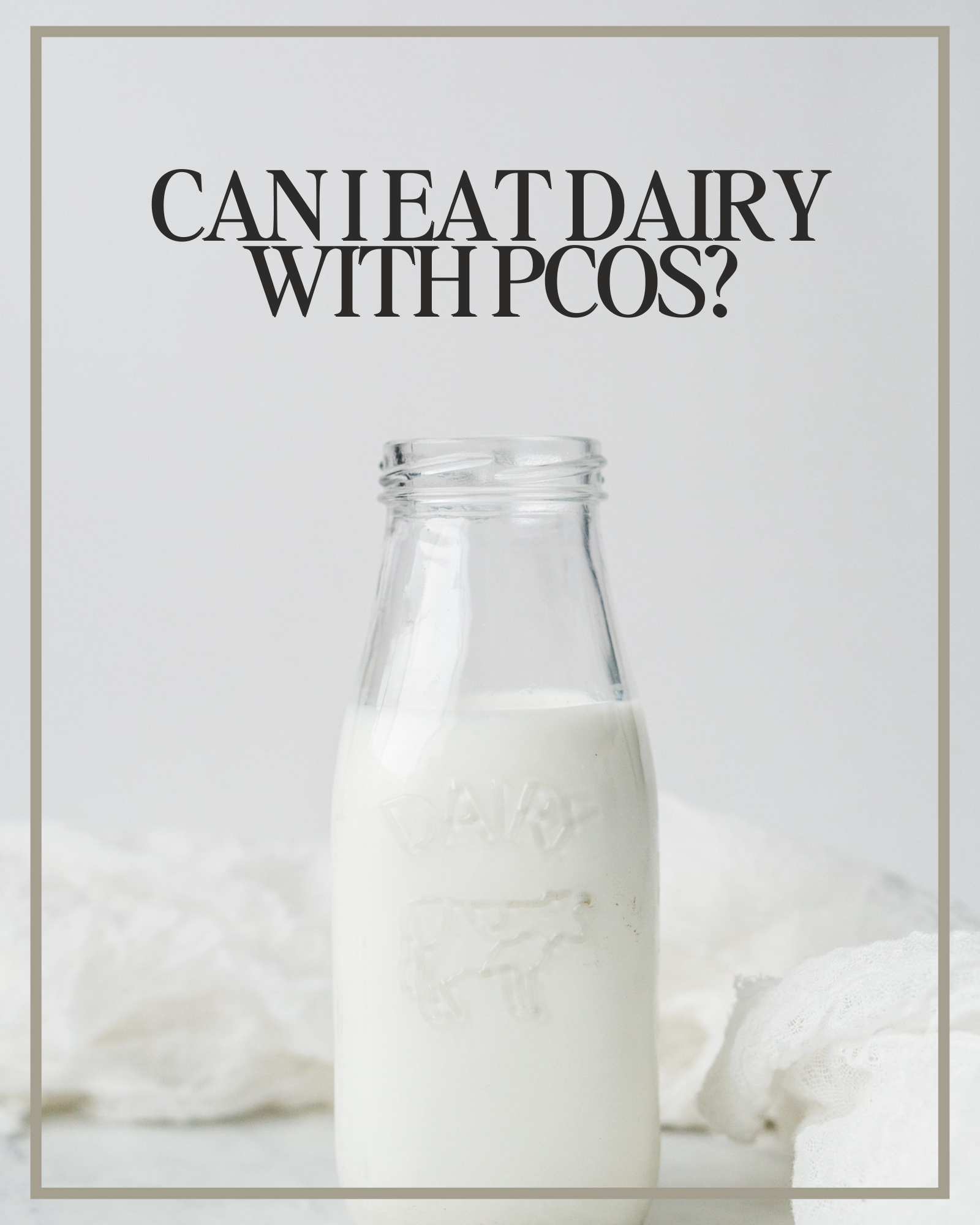
Balancing Macronutrients for Optimal PCOS Management
Balancing macronutrients effectively can make a substantial difference in managing PCOS symptoms. This means ensuring your meals have the right amounts of proteins, fats, and carbohydrates. It’s not just about meeting your daily caloric needs; it’s about how those calories are distributed among the macronutrients.
Proteins play a vital role not only in muscle repair but also in stabilizing your blood sugar levels. This can help reduce insulin spikes, which is particularly important for those with PCOS. Aim for 20+ grams of protein per meal to keep you feeling full and satisfied.
Fat is another essential part of your diet. It’s crucial to opt for healthy fats, such as those found in avocados, nuts, seeds, and olive oil. These not only help manage inflammation but also support hormone production, which can be particularly beneficial for PCOS management.
Carbohydrates should not be neglected, but choosing the right kind is key. Focus on non-starchy vegetables, whole grains, and legumes that provide fiber and a slow release of energy. This can help in maintaining steady blood sugar levels. Women with PCOS tend to process and break down carbohydrates more slowly than women without PCOS. This doesn’t mean you can’t eat carbs! Rather, if you have PCOS you need to be a bit more judicious with your carb intake.
The Bottom Line: Including a good mix of these macronutrients in every meal can be a game-changer in managing PCOS. Strive for balance and variety, and consider consulting with a registered dietitian to tailor your diet to your specific needs.
Understanding the Importance of Protein for PCOS
Polycystic Ovary Syndrome (PCOS) is a condition that affects hormone levels in women, leading to a variety of symptoms such as irregular menstrual cycles, weight gain, and even infertility. Since managing PCOS often includes addressing insulin resistance and weight management, incorporating adequate protein in your diet is essential.
Why Protein Matters: Protein is a macronutrient that plays a crucial role in various bodily functions, including muscle repair, enzyme activity, and immune function. More importantly for those with PCOS, protein helps in stabilizing blood sugar levels. Stable blood sugar means less insulin is required, which can be beneficial for insulin sensitivity—a common concern for those dealing with PCOS.
When you consume a high-protein meal, it can promote feelings of fullness and reduce appetite. This can be particularly helpful for weight management, an aspect that hugely impacts PCOS symptoms. Studies have shown that diets rich in protein can help reduce cravings and overall caloric intake, leading to weight loss and improved insulin sensitivity.
Moreover, lean protein sources like chicken breast, fish, tofu, and legumes can be incorporated into your meals without causing drastic spikes in blood sugar levels. This makes protein not only a vital nutrient for muscle and tissue repair but also a valuable ally in managing PCOS symptoms effectively.
Combining protein with other macronutrients such as healthy fats and complex carbohydrates can create balanced meals that support hormonal health. For instance, pairing lean protein with fiber-rich vegetables can further stabilize blood sugar levels, enhancing the benefits of a high-protein diet.
By focusing on including more high-protein foods into your meals, you’re not just adhering to a dietary recommendation—you’re taking an active role in managing PCOS symptoms and promoting better overall health.
Tips for Incorporating More Protein into Your Diet
- Start your day with a protein-rich breakfast like Greek yogurt topped with nuts and seeds.
- Incorporate a variety of protein sources, including plant-based options like lentils and chickpeas.
- Prep protein-packed snacks ahead of time, like boiled eggs or hummus with veggie sticks.
- Include protein in every meal by adding ingredients like tofu, chicken, or fish to salads and stir-fries.
- Blend protein powder into your smoothies for an extra boost in the mornings or post-workout.
Power-Packed Breakfast: Quinoa and Egg Scramble
Kickstart your day with this nutrient-dense breakfast that’s brimming with protein. Quinoa, often hailed as a supergrain, is not only rich in protein but also provides a solid dose of fiber. Paired with protein-packed eggs, this dish is a fantastic way to fuel your morning.

Ingredients:
- 1 cup cooked quinoa
- 2 large eggs
- 1/2 cup baby spinach
- 1/4 cup diced tomatoes
- 1/4 cup chopped bell peppers
- 1/4 cup shredded cheese (optional)
- Salt and pepper to taste
- 1 tbsp olive oil
Instructions:
- Heat the olive oil in a skillet over medium heat.
- Add the diced tomatoes and bell peppers, and sauté for 3-4 minutes until they soften.
- In a bowl, whisk the eggs with a pinch of salt and pepper.
- Add the spinach to the skillet and cook until wilted.
- Pour in the whisked eggs and scramble everything together until the eggs are fully cooked.
- Stir in the cooked quinoa and cook for another 2-3 minutes until everything is well mixed.
- If using, sprinkle shredded cheese on top and let it melt.
This quinoa and egg scramble isn’t just filling; it’s also versatile. Feel free to add your favorite veggies or swap the cheese for a dairy-free alternative if you’re lactose intolerant. Enjoy this dish for a hearty breakfast that keeps you energized and supports your PCOS health.
Lunchtime Delight: Grilled Chicken and Lentil Salad
Combining lean protein with fiber-rich lentils and a medley of fresh vegetables, this salad is not only delicious but also incredibly nutritious. Plus, it’s super easy to prepare, making it a perfect option for busy weekdays.
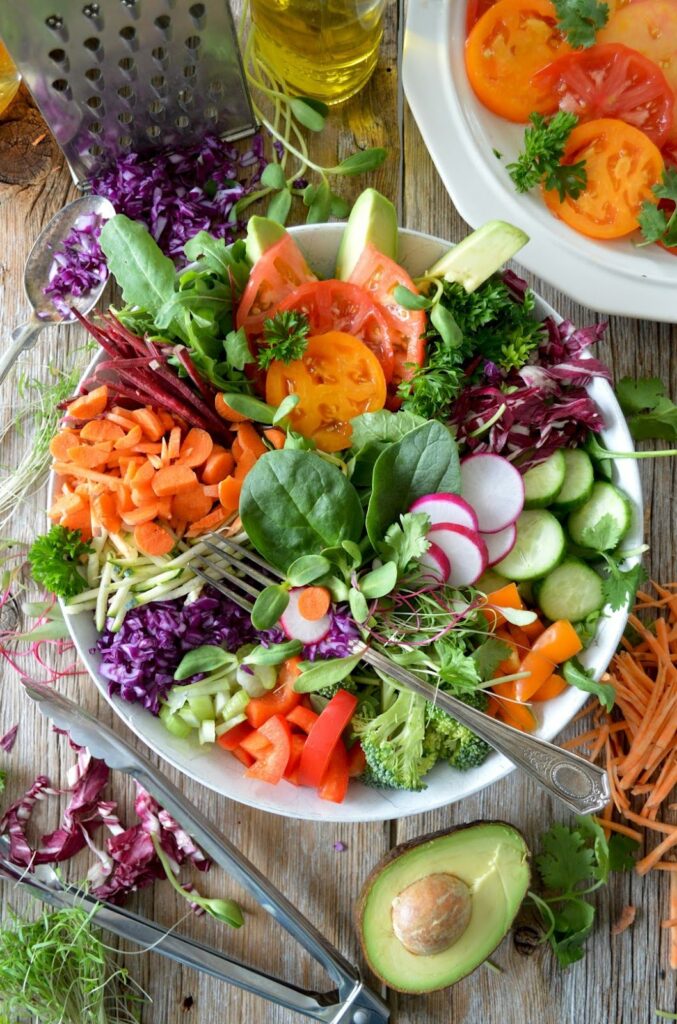
Ingredients:
- 2 grilled chicken breasts, sliced
- 1 cup cooked lentils
- 1 cucumber, diced
- 1 bell pepper, diced
- 1/2 cup cherry tomatoes, halved
- 1/4 red onion, thinly sliced
- 2 cups mixed greens
- 1 tbsp olive oil
- 1 tbsp lemon juice
- Salt and pepper to taste
- Optional: Feta cheese crumbles and fresh herbs
Instructions:
- Start by grilling the chicken breasts until they are thoroughly cooked. Slice them into thin strips once they have cooled slightly.
- In a large mixing bowl, combine the cooked lentils, cucumber, bell pepper, cherry tomatoes, red onion, and mixed greens.
- Drizzle the olive oil and lemon juice over the salad and toss to combine. Season with salt and pepper to taste.
- Top the salad with the grilled chicken slices. If desired, sprinkle feta cheese and fresh herbs over the top for added flavor.
- Serve immediately or store in an airtight container for a quick grab-and-go lunch.
This grilled chicken and lentil salad offers a balanced mix of protein, healthy fats, and fiber that can help stabilize blood sugar levels and keep you feeling full and energized throughout the day—an essential factor when managing PCOS.
Flavorful Dinner: Tofu Stir-Fry with Mixed Veggies
Tofu is an excellent source of plant-based protein and pairs wonderfully with a variety of vegetables for a nutrient-packed dinner. Start by pressing your tofu to remove excess moisture, which will help it absorb more of the flavorful sauce. Next, cut the tofu into bite-sized cubes and lightly coat them with cornstarch to provide that coveted crispy texture when stir-fried.
For the vegetables, consider using a mix of broccoli, bell peppers, carrots, and snap peas – not only do they bring a beautiful array of colors to your plate, but they also offer a diverse range of vitamins and minerals beneficial for managing PCOS. Sauté the veggies in a hot pan with a bit of olive oil until they’re tender yet still slightly crisp.

In a small bowl, mix together a simple yet delicious sauce. Combine soy sauce, minced garlic, ginger, a dash of sesame oil, and a tablespoon of honey or maple syrup. For a little heat, add a pinch of red pepper flakes. Pour the sauce over the tofu and vegetables, stirring to ensure every piece is well-coated.
Serve your tofu stir-fry over a bed of brown rice or quinoa for an additional protein and fiber boost. This meal not only satisfies your taste buds but also aligns with dietary needs essential for managing PCOS. Enjoy the balance of savory and slightly sweet flavors, knowing you’re treating your body right.
Sweet Snack: Greek Yogurt with Chia Seeds and Berries
Sometimes, satisfying your sweet tooth while sticking to your high-protein diet can seem challenging, especially when living with PCOS. That’s where Greek yogurt with chia seeds and berries comes to the rescue! This snack is not only delicious but also packs a powerful punch of protein, healthy fats, and antioxidants.
Start with a cup of plain Greek yogurt. Greek yogurt is a fantastic source of protein, offering around 10 grams per serving. It’s also rich in probiotics, which are beneficial for gut health—a crucial factor when managing PCOS.
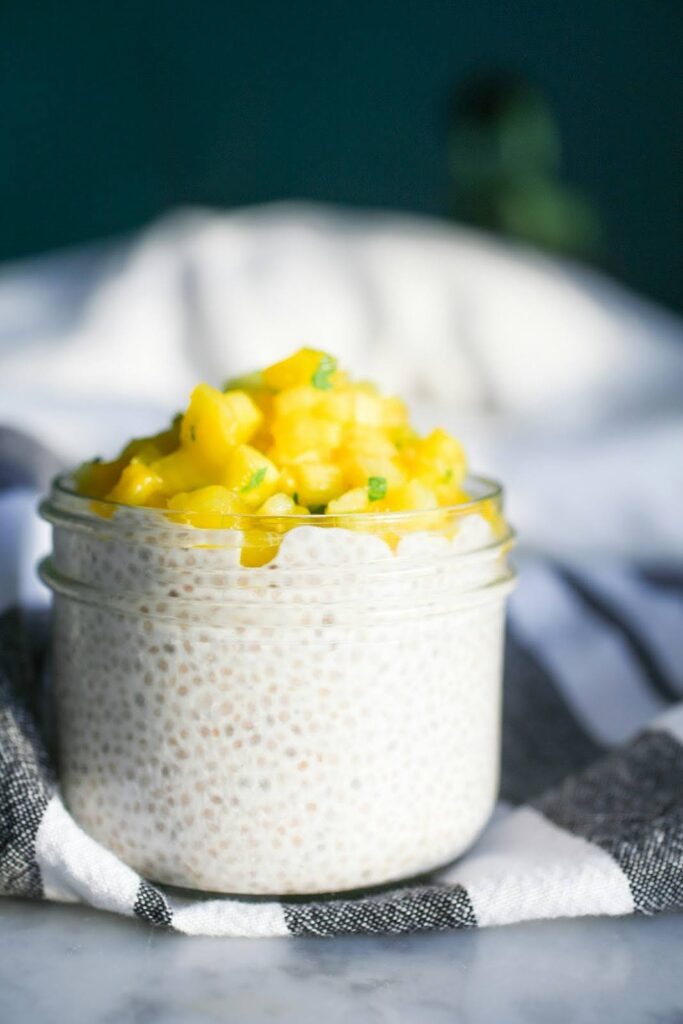
Next, add a tablespoon of chia seeds. These tiny seeds are nutritional powerhouses, providing an additional 2 grams of protein per tablespoon, along with omega-3 fatty acids and fiber. The fiber in chia seeds can help manage blood sugar levels, an important aspect for those with PCOS.
Top your yogurt and chia mixture with a handful of fresh berries—strawberries, blueberries, or raspberries are excellent choices. Berries are low in sugar but high in antioxidants, which combat inflammation and can improve overall metabolic health.
Finally, if you need an extra touch of sweetness, drizzle a small amount of raw honey or add a few slices of banana. This will make your snack even more indulgent without straying from healthy eating principles.
Hearty Soup: Turkey and Spinach Lentil Soup
When it comes to hearty and nutritious meals, this Turkey and Spinach Lentil Soup checks all the boxes. Not only is it packed with protein and fiber, but it also offers a flavorful and satisfying option for lunch or dinner.
Ingredients:
- 1 lb ground turkey
- 1 cup dried lentils, rinsed
- 6 cups low-sodium chicken broth
- 1 medium onion, chopped
- 2 carrots, diced
- 2 celery stalks, diced
- 3 cups baby spinach
- 3 cloves garlic, minced
- 1 tsp dried thyme
- 1 tsp dried oregano
- 1 tsp paprika
- Salt and pepper to taste
- 2 tbsp olive oil
Instructions:
- In a large pot, heat some olive oil over medium heat. Add the finely chopped onion and garlic, sautéing until they become fragrant and translucent.
- Next, add the ground turkey to the pot. Cook until the meat is browned, breaking it up with a wooden spoon as it cooks.
- Stir in the diced carrots, celery, tomatoes, and lentils. Pour in the chicken broth and bring the mixture to a boil.
- Reduce the heat to low, cover the pot, and let it simmer for about 30 minutes, or until the lentils and vegetables are tender.
- Add the spinach leaves during the last 5 minutes of cooking, allowing them to wilt and integrate into the soup.
- Season with salt, pepper, and any additional herbs or spices to taste, such as thyme or basil.
- Serve the soup hot, and enjoy a warm, nutritious meal that’s perfect for managing PCOS.
Conclusion
Incorporating high-protein meals into your diet can be a game-changer when managing PCOS. The recipes we’ve explored are not only nutritious but also delicious, offering a variety of flavors to keep your meals exciting. By balancing macronutrients and choosing wholesome ingredients, you can support better ovulation, reduce symptoms like acne and bloating, and enhance your overall well-being. Remember, managing PCOS takes a holistic approach—so listen to your body, make adjustments as needed, and don’t forget to enjoy your culinary journey. Here’s to healthier days ahead!
PS Looking for more? Check out our Four Week Fertility Meal Plan, with four weeks of done-for-you meals, grocery lists, and meal prep tasks.
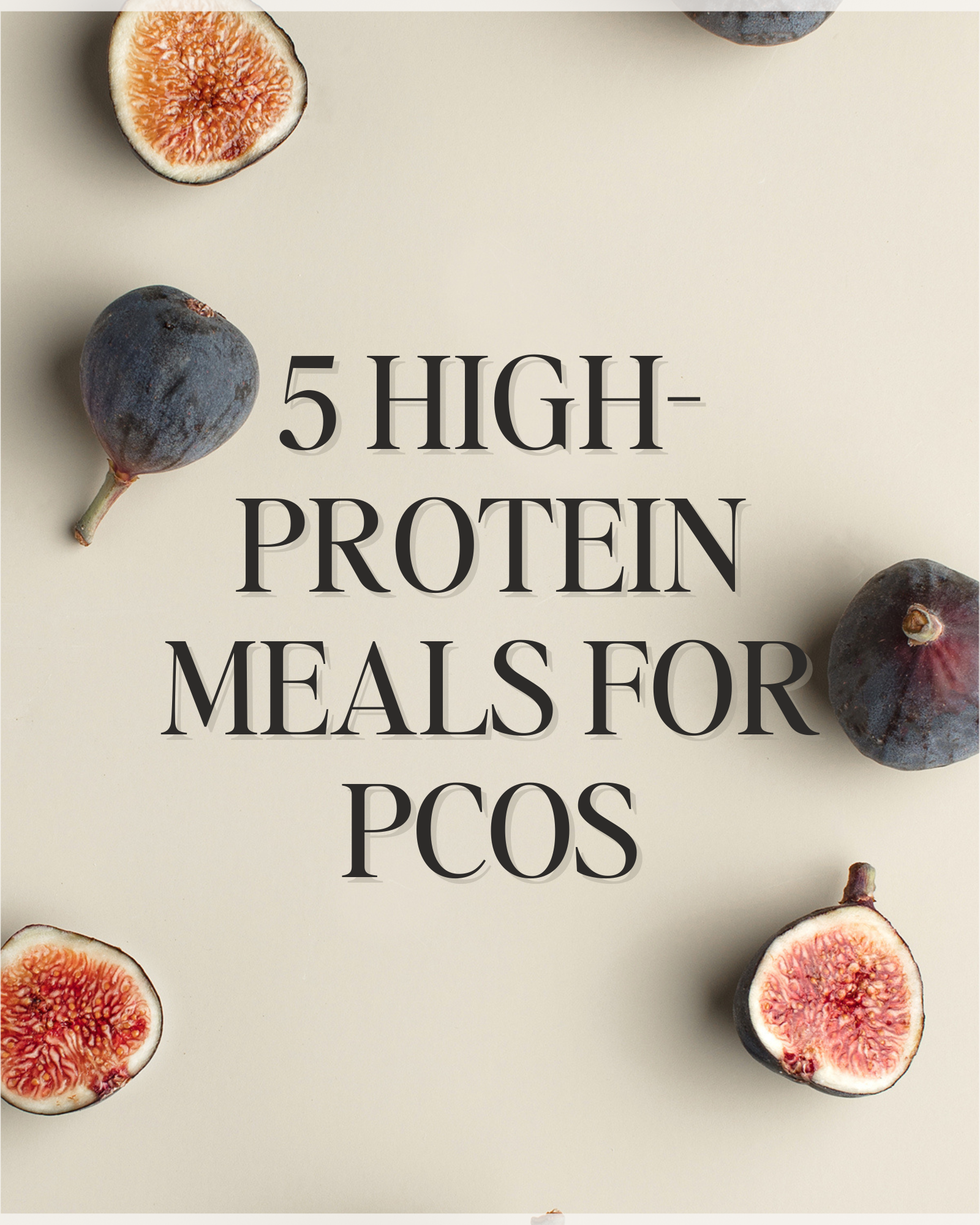
The Preconception Playbook
This free playbook provides specific actionable tips to get started on your fertility journey, as well as what to avoid while you're trying to conceive.
Get the free playbook
